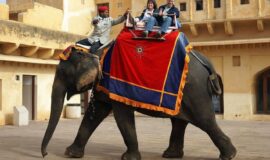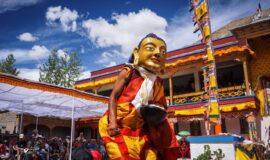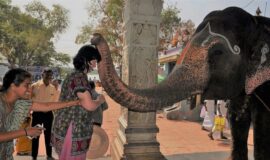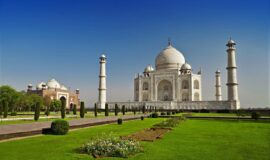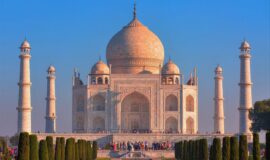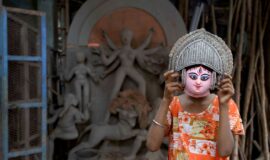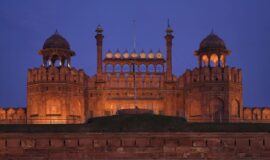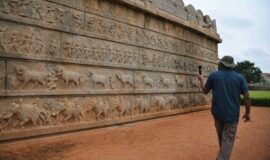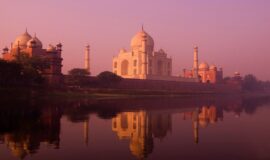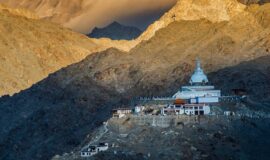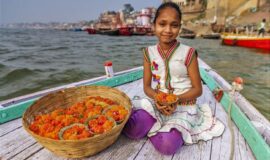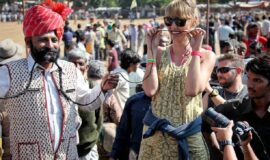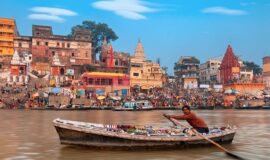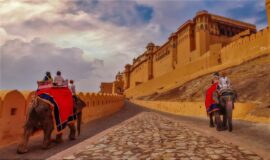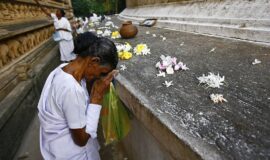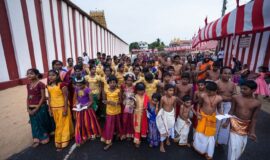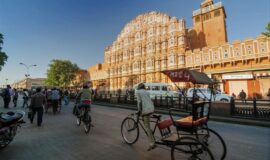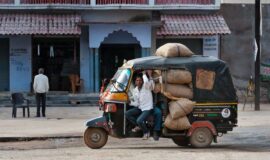Laxminarayan Temple, Orchha – fusion of fort and temple architecture
Laxminarayan, Unique Fusion of Temple and Fort
Beautiful Bundela Art of Laxminarayan Temple
The Love Story of Orchha – Sundar Mahal
Laxminarayan, Unique Fusion of Temple and Fort
Bir Singh Deo was responsible for the construction of Laxminarayan Temple and around 1793 Raja Prithvi Singh undertook its restoration. This is a unique example of the fusion of fort and temple architecture. It was built with bricks and lime mortar, while the roof walls have numerous slots for cannons. Whether these cannons were a component of the earliest times is not clear.
The temple is rectangular in design with a massive bastion supporting each corner. Probably because of the restoration in the 1700’s it is in a remarkable condition. However, there is no deity or idol in the shrine. This temple has beautiful jaali windows which are curious since it is not typical of Hindu temples. The story goes that Singh Deo saw to the necessary arrangements in the innermost chambers for the sacrifice of animals.
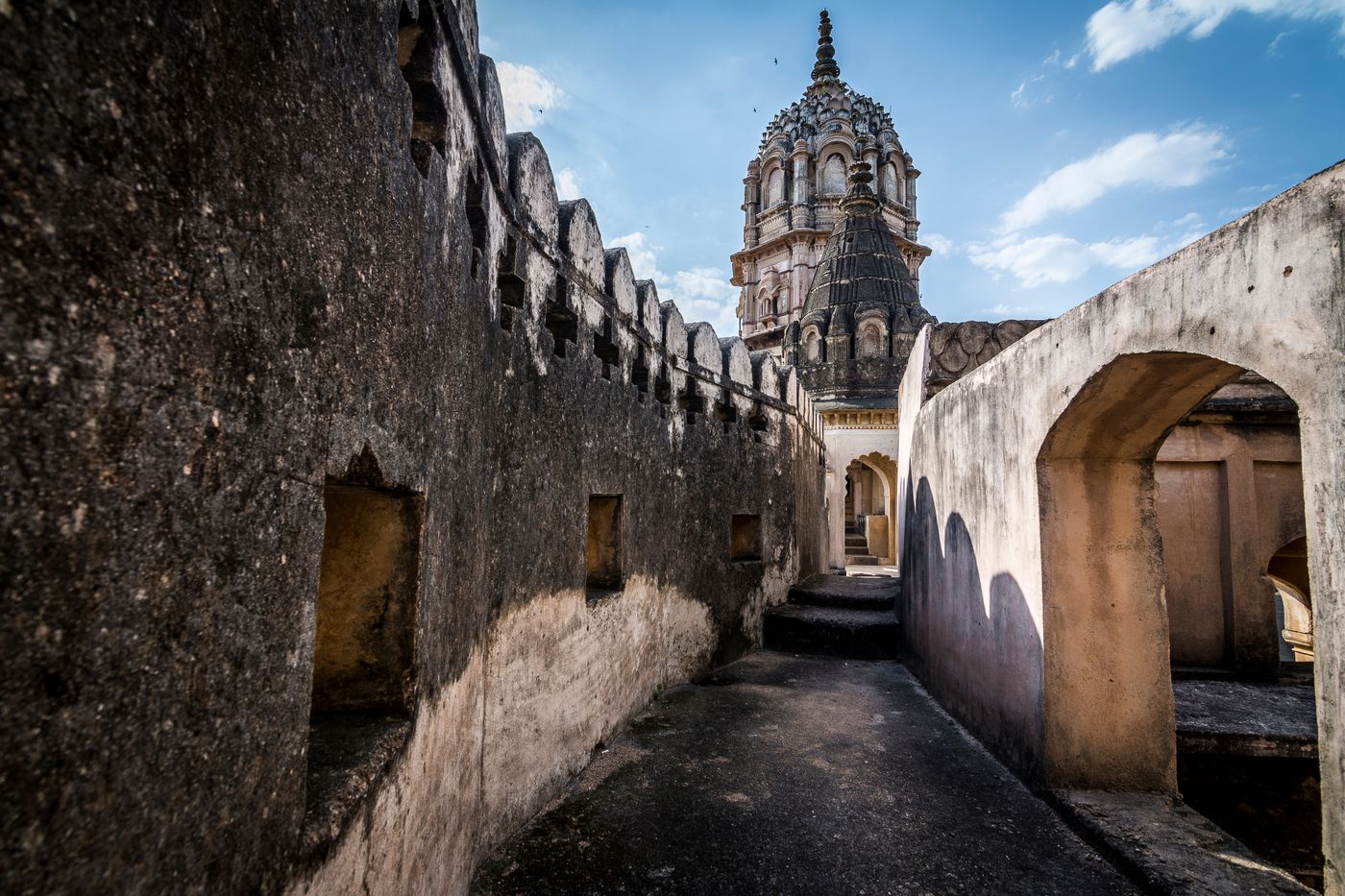
The serpentine corridor of Lakshmi Narayan temple in Orchha leading to the stairway to access one of the bastions of the temple © Damian chiappe
Beautiful Bundela Art of Laxminarayan Temple
The interior walls of the Laxminarayan Temple are covered in murals in bright colors, similar to the Raj Mahal. Fortunately, these are wonderfully well-preserved and vary in themes ranging from the spiritual to the religious and secular. Scenes from Krishna’s life are depicted, as well as events from the Ramayana, the Sanskrit epic of ancient India, and Tulsidas, the poet and saint’s Ram Charita thoughts or manas.
The most famous mural depicts Rani Lakshmibai directing her Jhansi army from her palace chamber in the fierce battle against the British forces during the 1857 mutiny. The painting dates back to the 1800s and covers the entire ceiling of the ground floor arcade. It was done in a riot of colors artistically executed to form the perfect example of the vibrant Bundela style of painting, a true fusion of that of the Rajput and Mughal.
Laxminarayan Temple is situated half a mile to the west of the temple of Ram Raja. A flagstone pathway connects the two buildings.
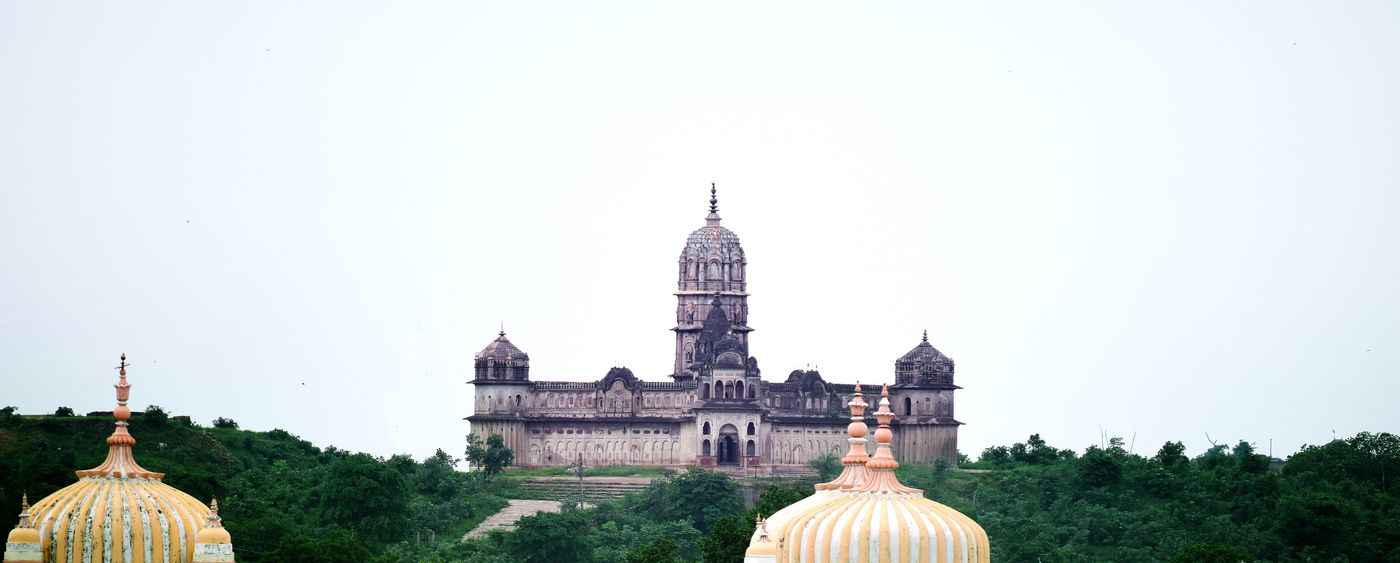
A landscape view of the impressive Lakshmi Narayan Temple, situated in Orchha, representing the perfect blend of temple and fort architecture © Rajesh Misra
The Love Story of Orchha – Sundar Mahal
This sandy colored temple has the Betwa River to provide a stunning background. It is situated to the western side of Laxminarayan Temple and the Muslim population of the area venerates it as a shrine. The story is told of prince Dhurbhajan, Jhujjar’s son who built this temple for his Muslim wife from Delhi whom he married against the wishes of her parents. The last part of his earthly life was spent in prayers and mediation which turned him into a saint in the eyes of the citizens of Orchha. As a result of his veneration, his temple became a shrine. The ruin of this former beautiful building is a symbol of the eternal love between a Muslim woman and her Hindu prince.
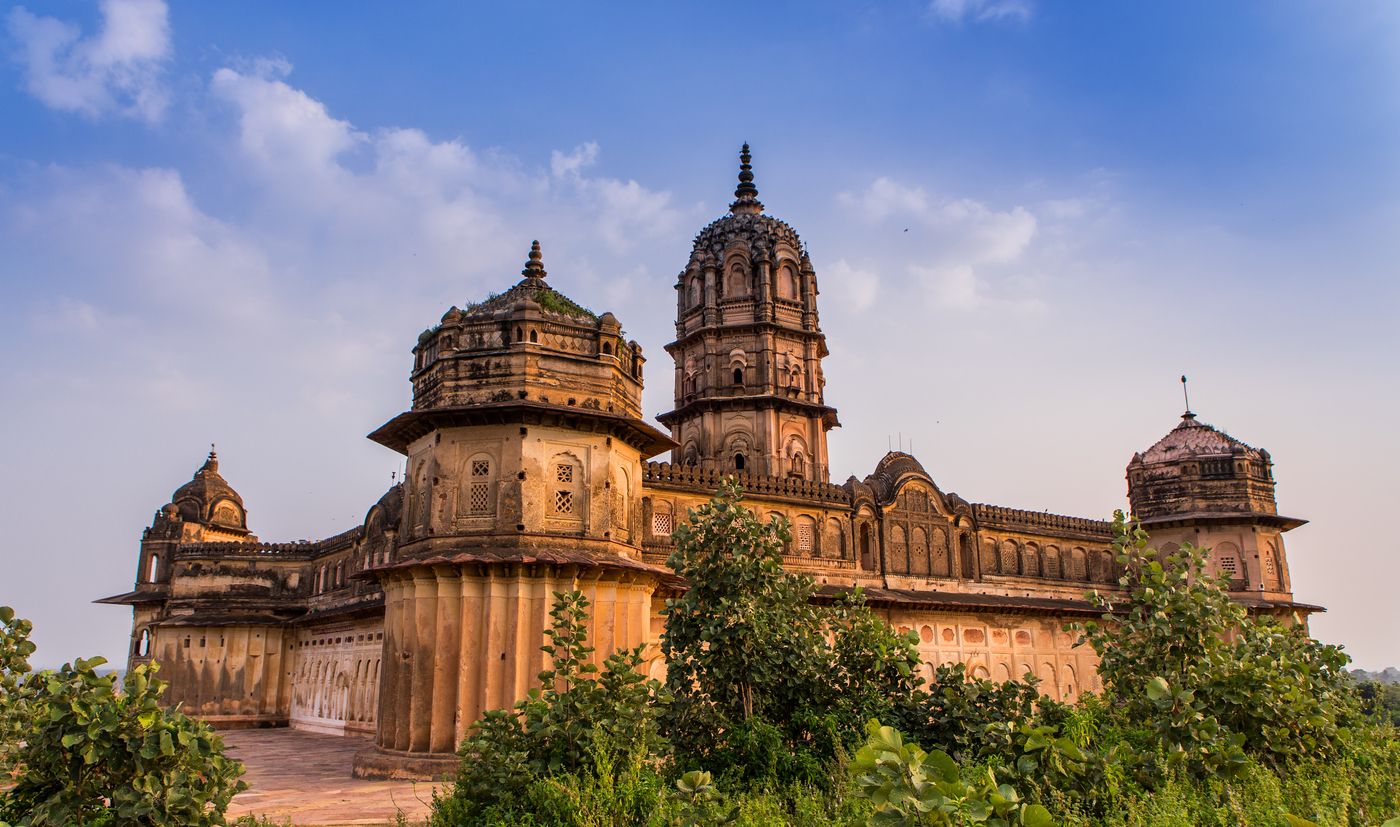
Laxminarayan Temple built like a fort, Orchha © Damian Pankowiec
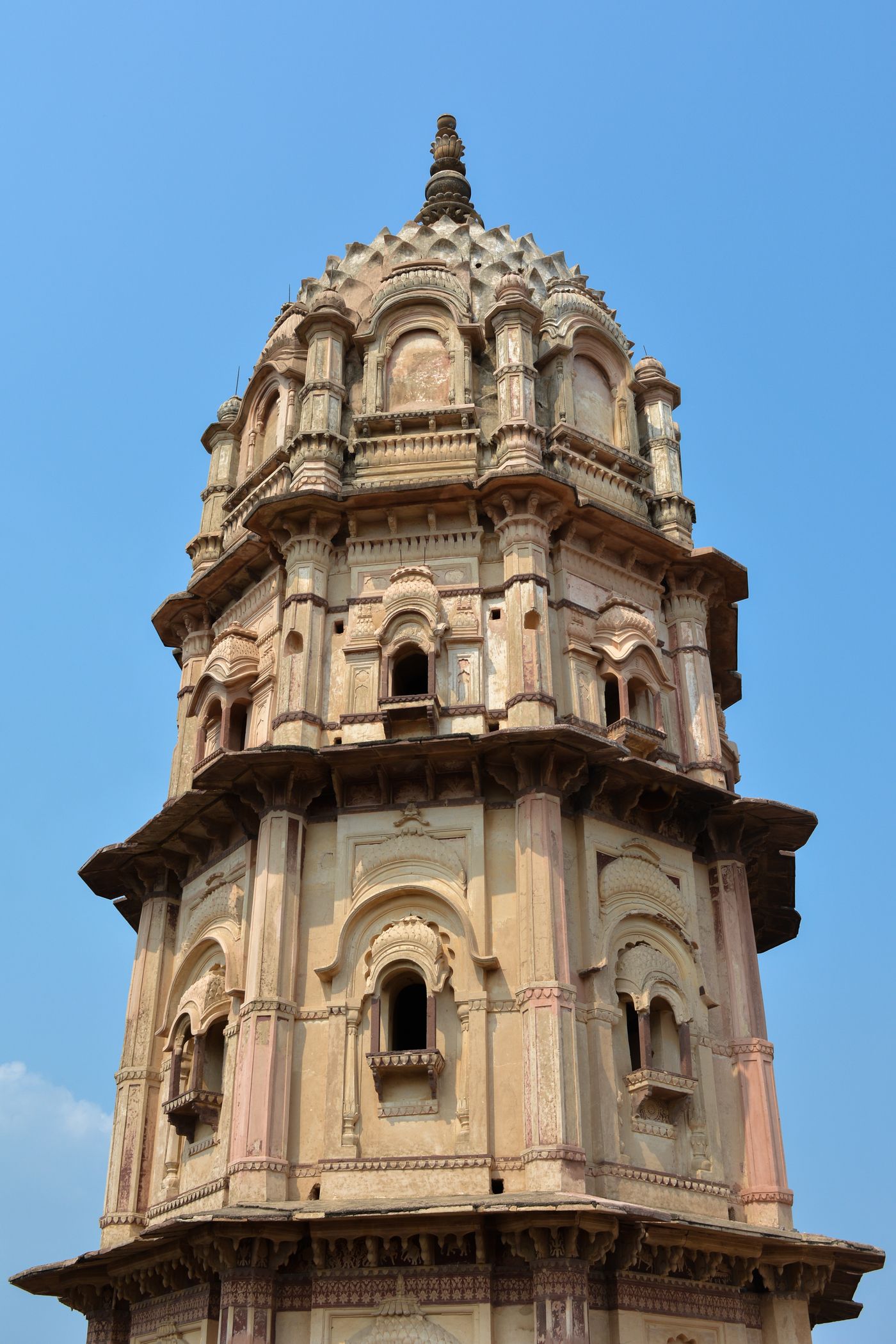
The high domed octagonal watchtower of Lakshmi Narayan Temple in Orchha, lined with false balconies and cannon openings.
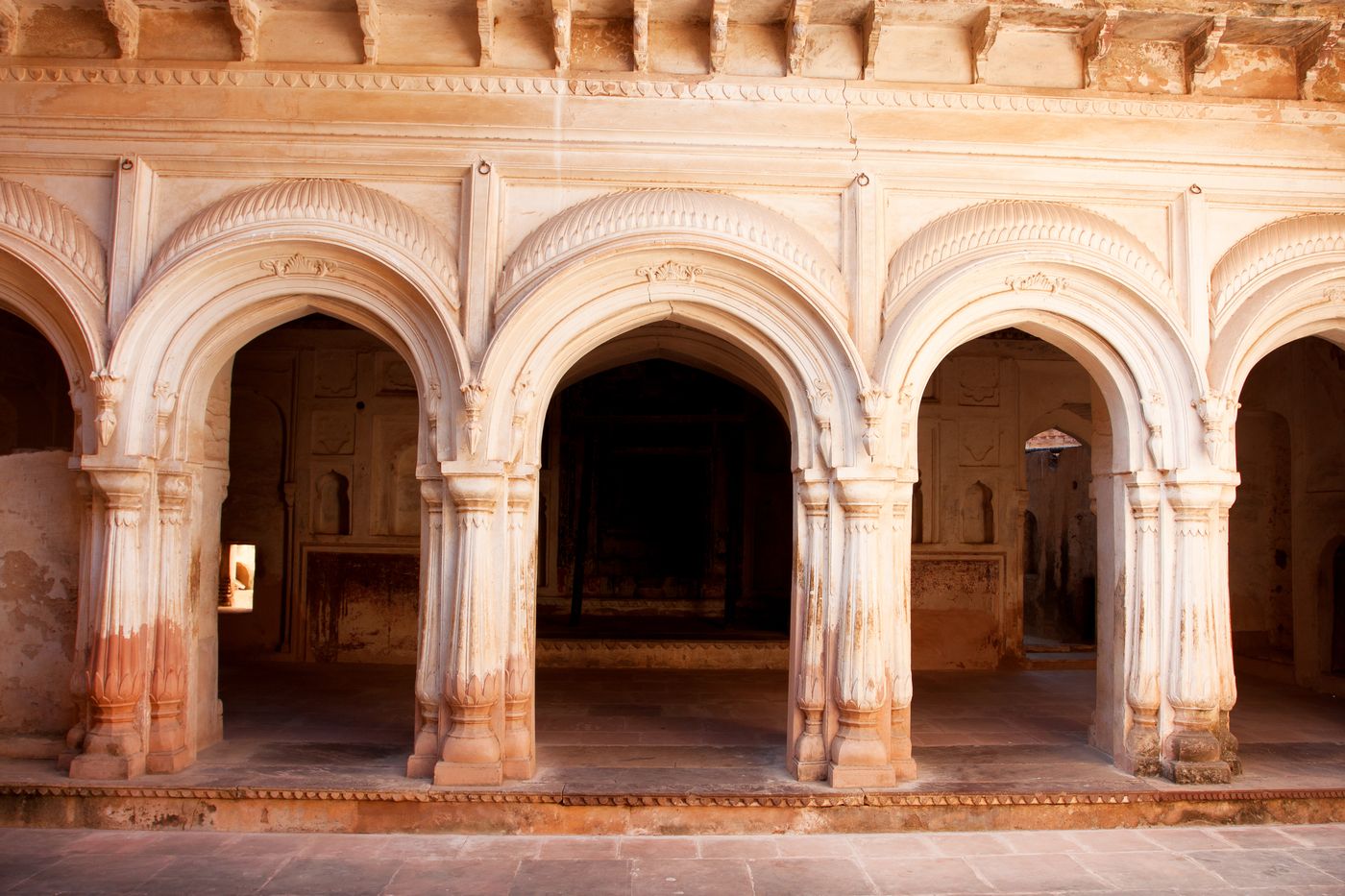
The high arches inside Lakshmi Narayan temple in Orchha, constructed in 1622 by Bundela king Veer Singh © Radiokafka
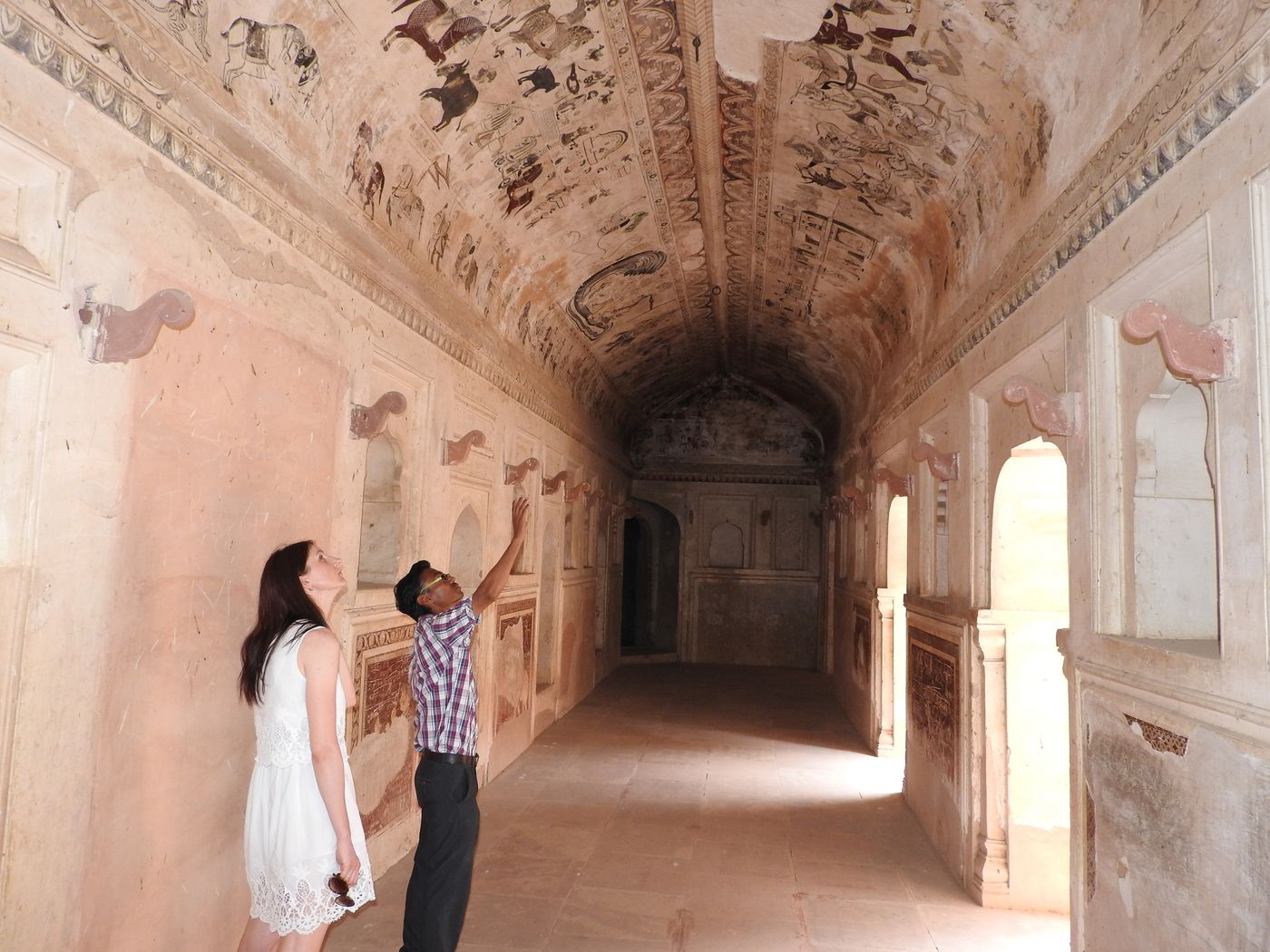
The curved ceiling inside Lakshmi Narayan temple, lined with murals dedicated to Goddess Laxmi, located in Orchha © Konstantin Litvinov
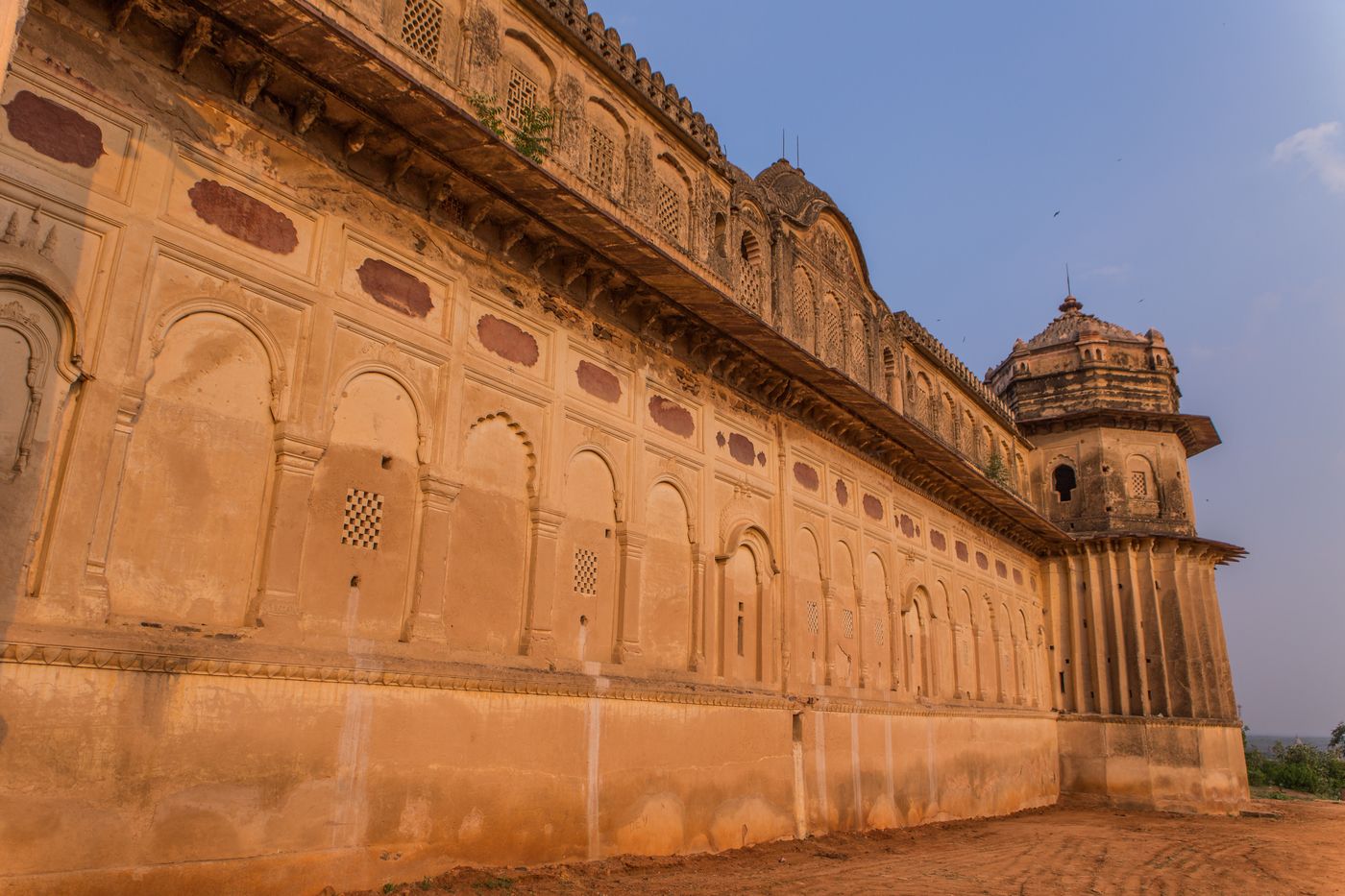
Parapet walls dotted with cannon slots, Orchha © Damian Pankowiec
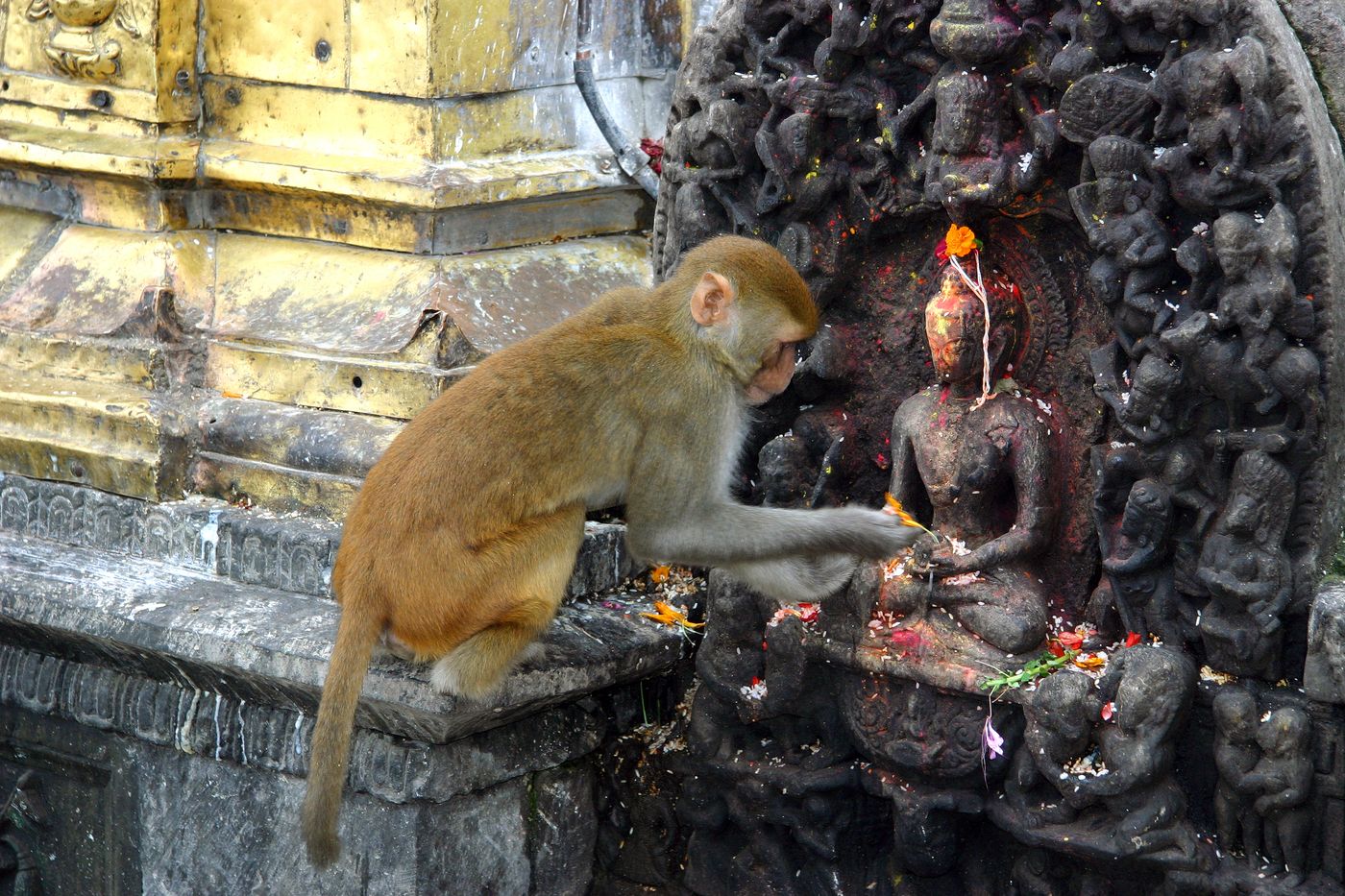
Offerings left by worshippers being stolen by monkeys, Orchha © Guillermo Garcia
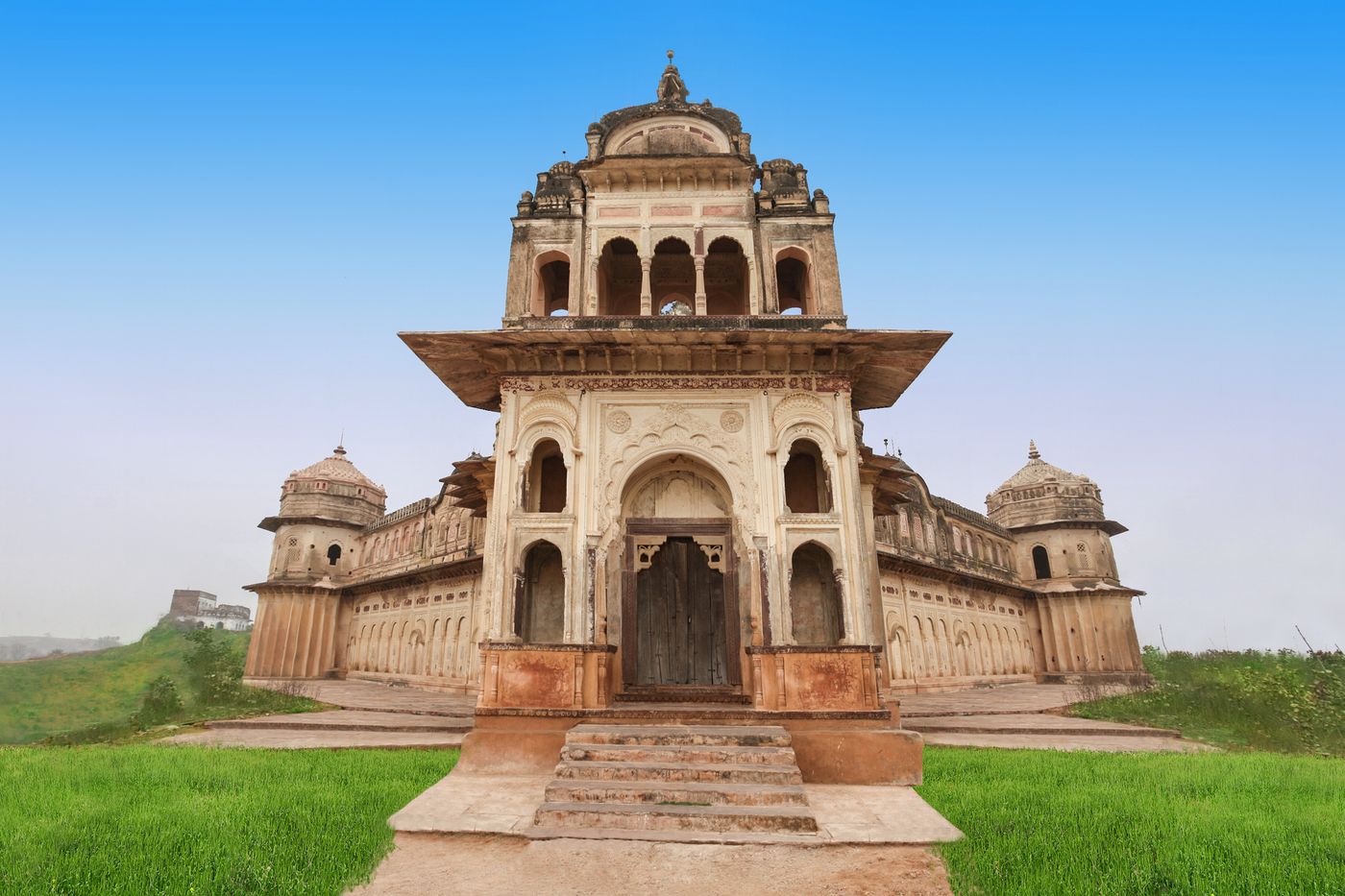
Lakshmi Narayan Temple located in Orchha © saiko3p
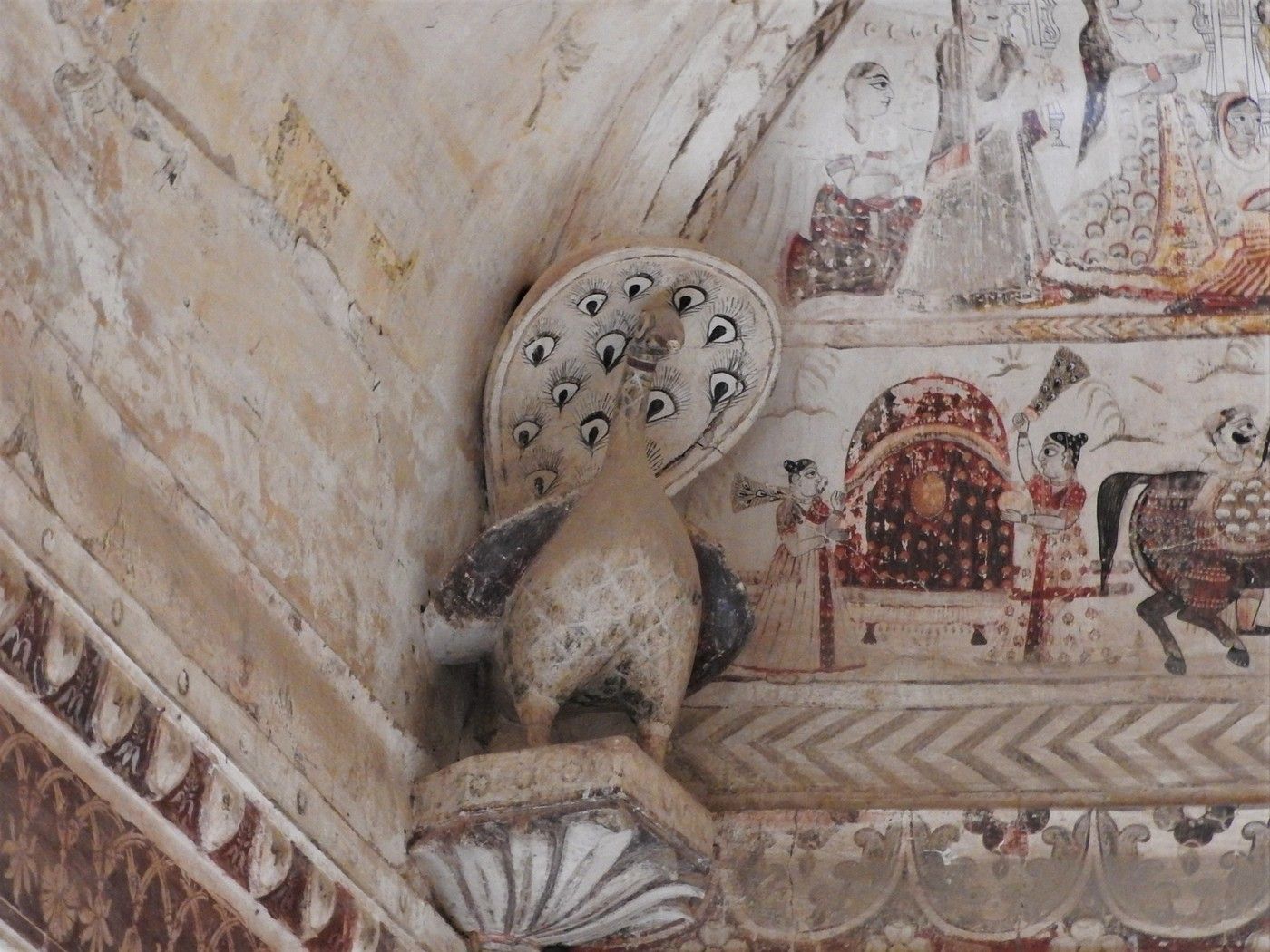
Every corner in Lakshmi Temple is adorned with peacocks. The aim was to separate the different paintings and to decorate the corners, Orchha © Konstantin Litvinov / Getty Images
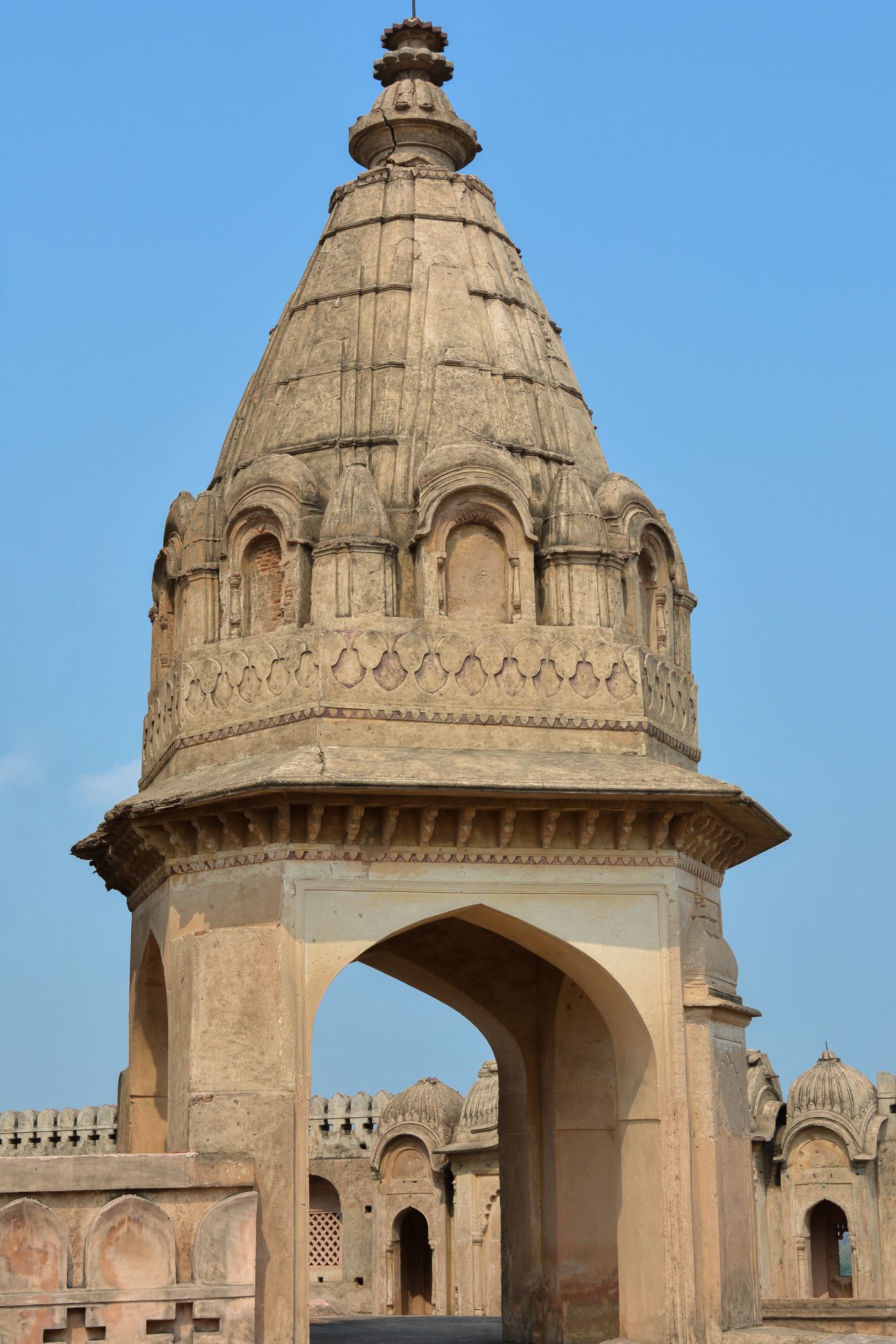
A tower located in the courtyard of Lakshmi Narayan temple in Orchha, covered with several kiosks © Sahil Ghosh
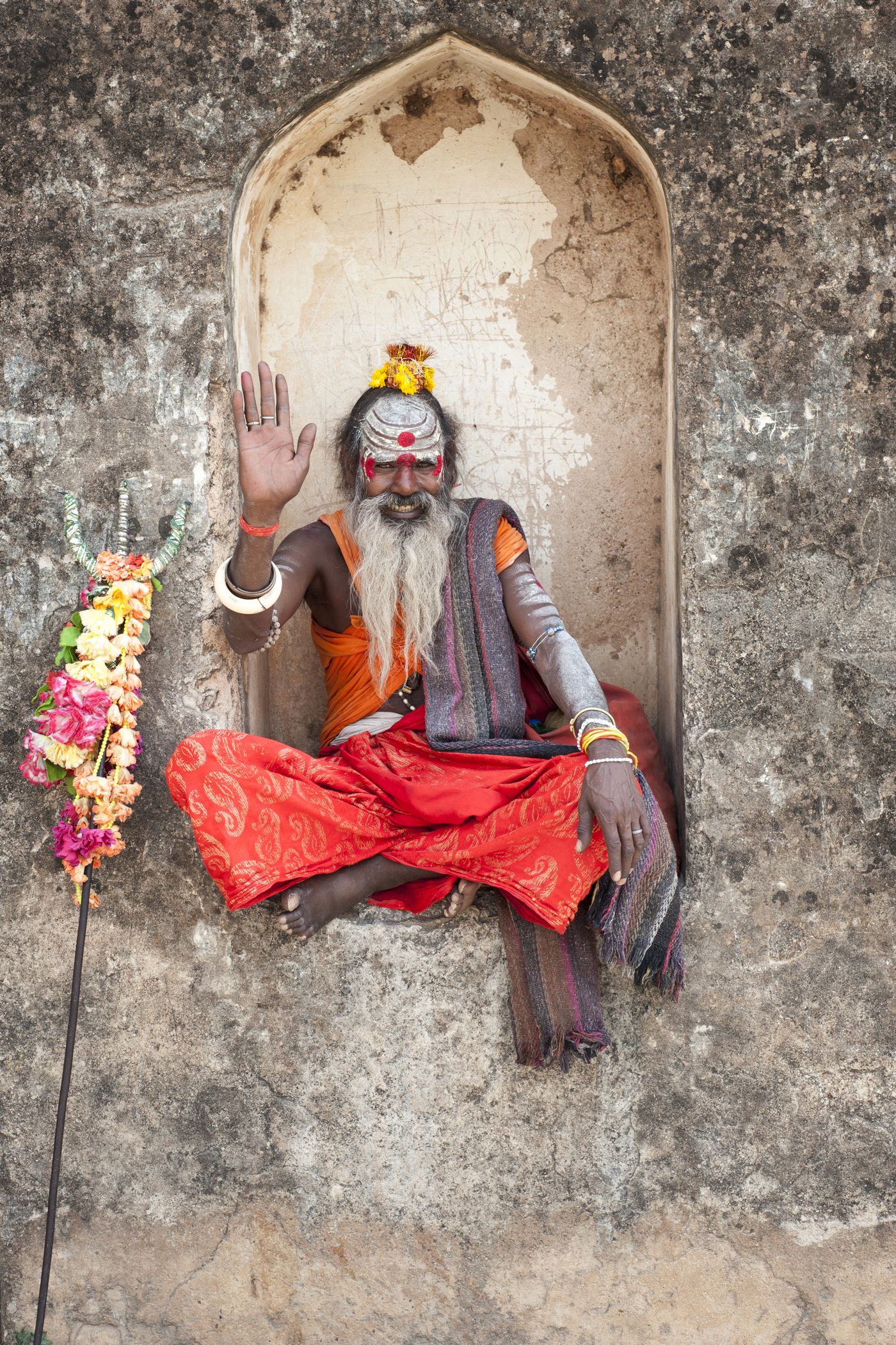
A sacred Sadhu man with customarily painted face, blessing at Lakshmi Narayan Temple, Orchha © B.Stefanov
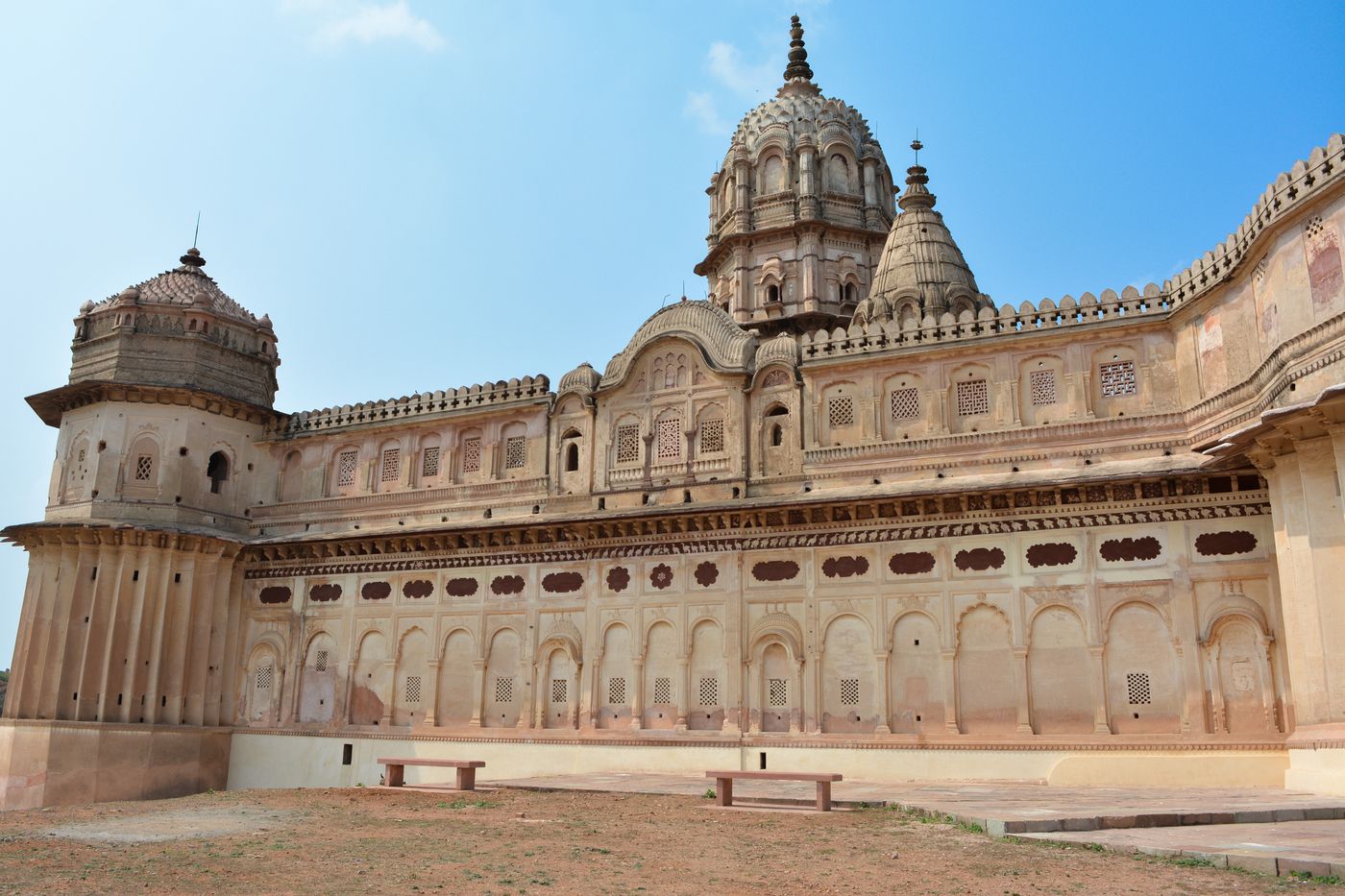
A panoramic view of the exquisite architecture of Lakshmi Narayan temple in Orchha, lined with jharokhas and pillars © Sahil Ghosh
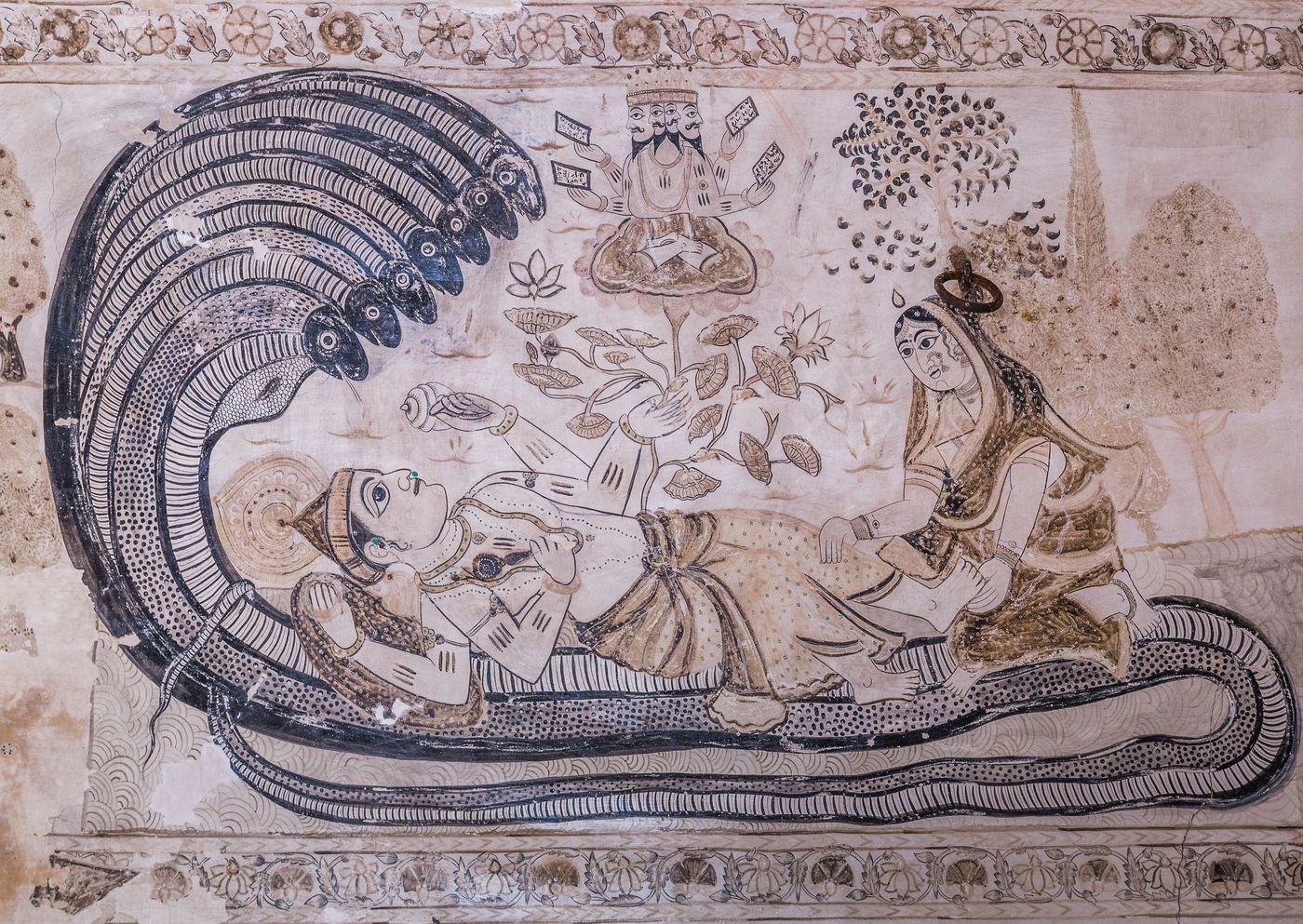
A beautiful depiction of Lord Vishnu resting on Sheshanaga, a seven-headed cobra, while his consort Lakshmi is massaging his leg, Orchha © Kevin Standage
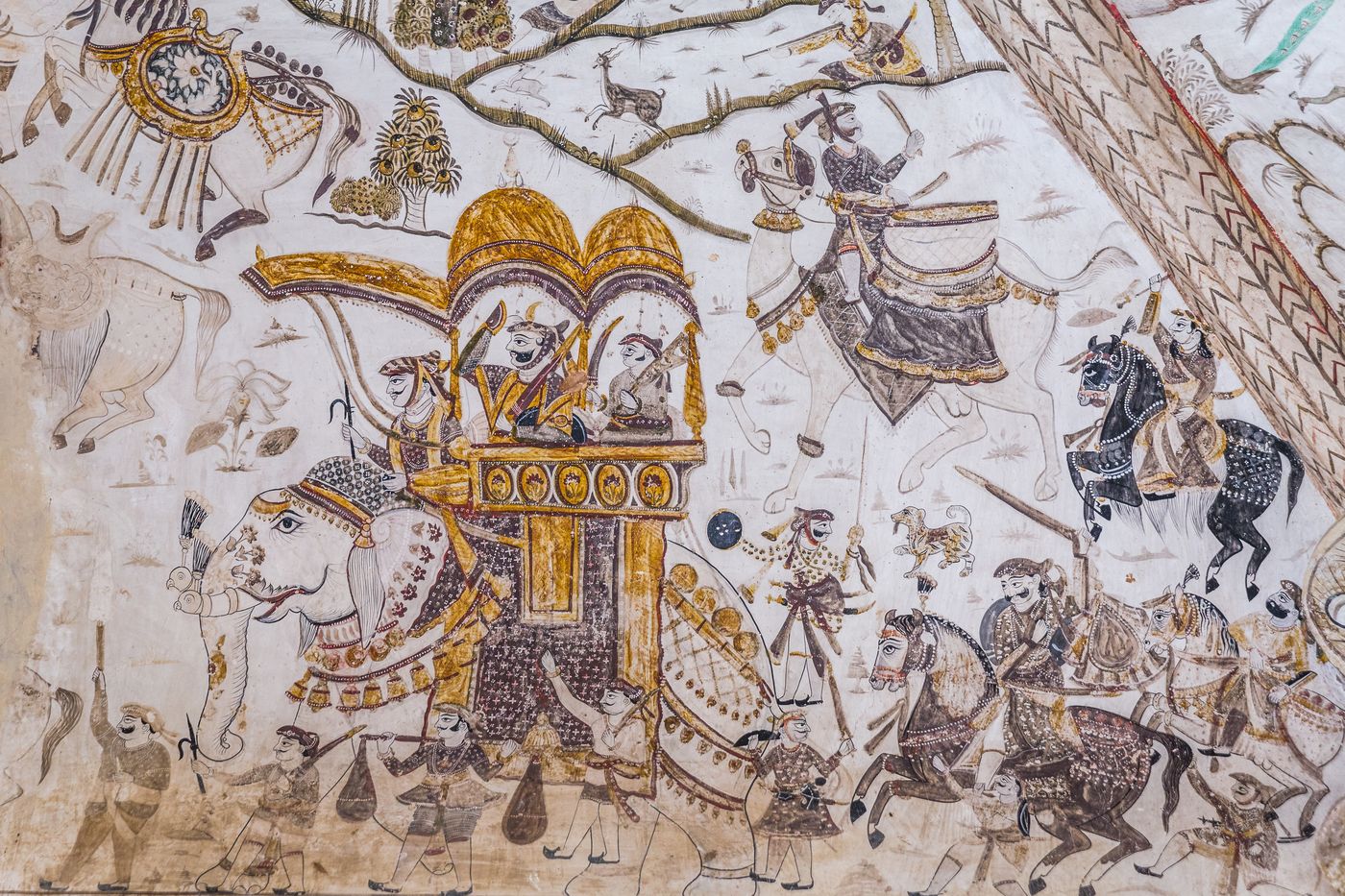
A beautiful hunting scene with the king sitting on an elephant in a howdah, or elephant seat. In the olden days, the king would go hunting with a pack of dogs, that would surround the prey, like deer and wild boar, on three sides, while the king would fire the fatal shot from the clear side. The elephant tusks are adorned with beautiful parrot shaped covers, Orchha © Kevin Standage
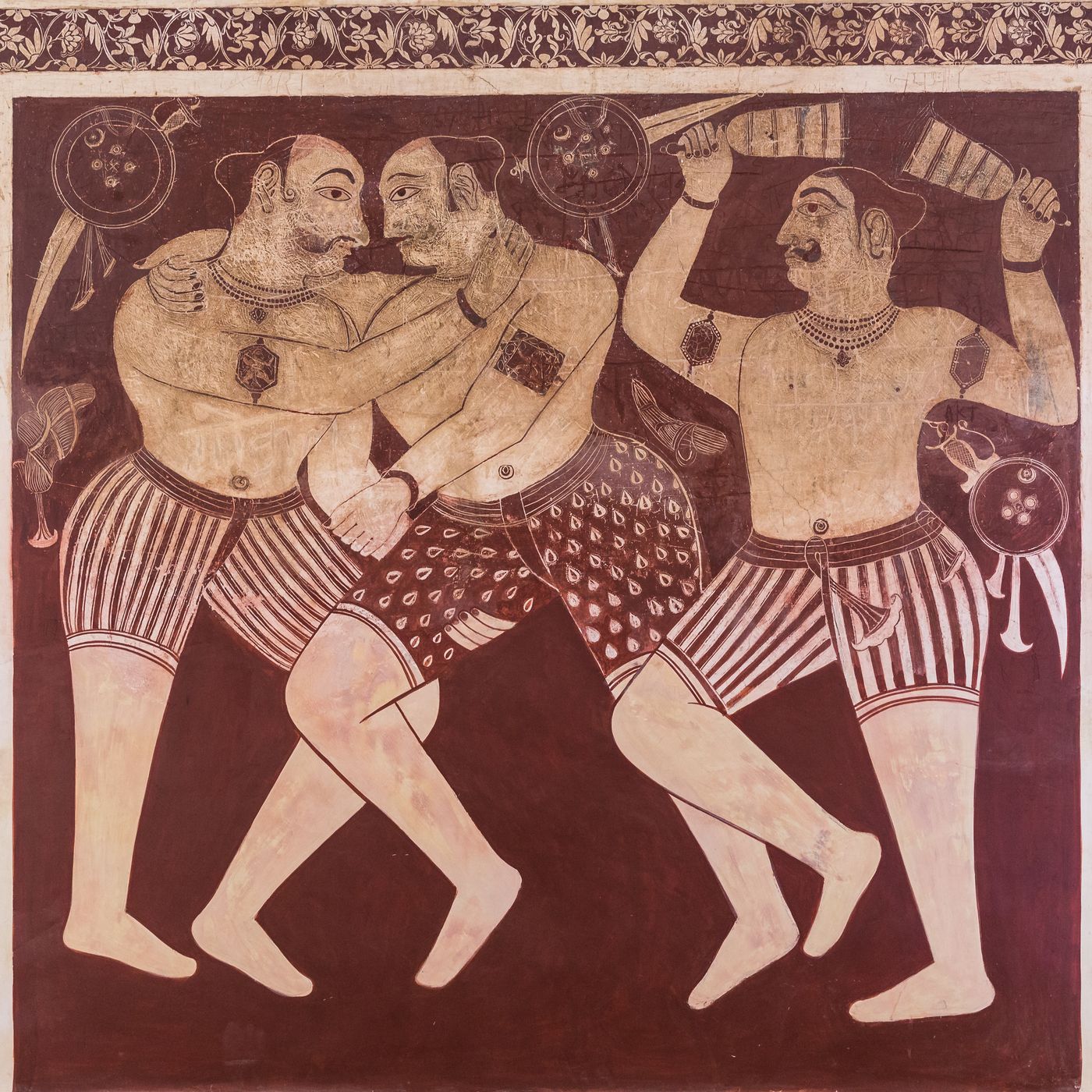
A painting of two wrestlers practicing their skills. This technique stems from ancient India; wrestlers hold two big dumbbells made of teak. The weight of the dumbbells depends on the strength of the wrestler. The bracelets on their arms depict the monkey God Hanuman, also considered to be the God of wrestling, Orchha © Kevin Standage
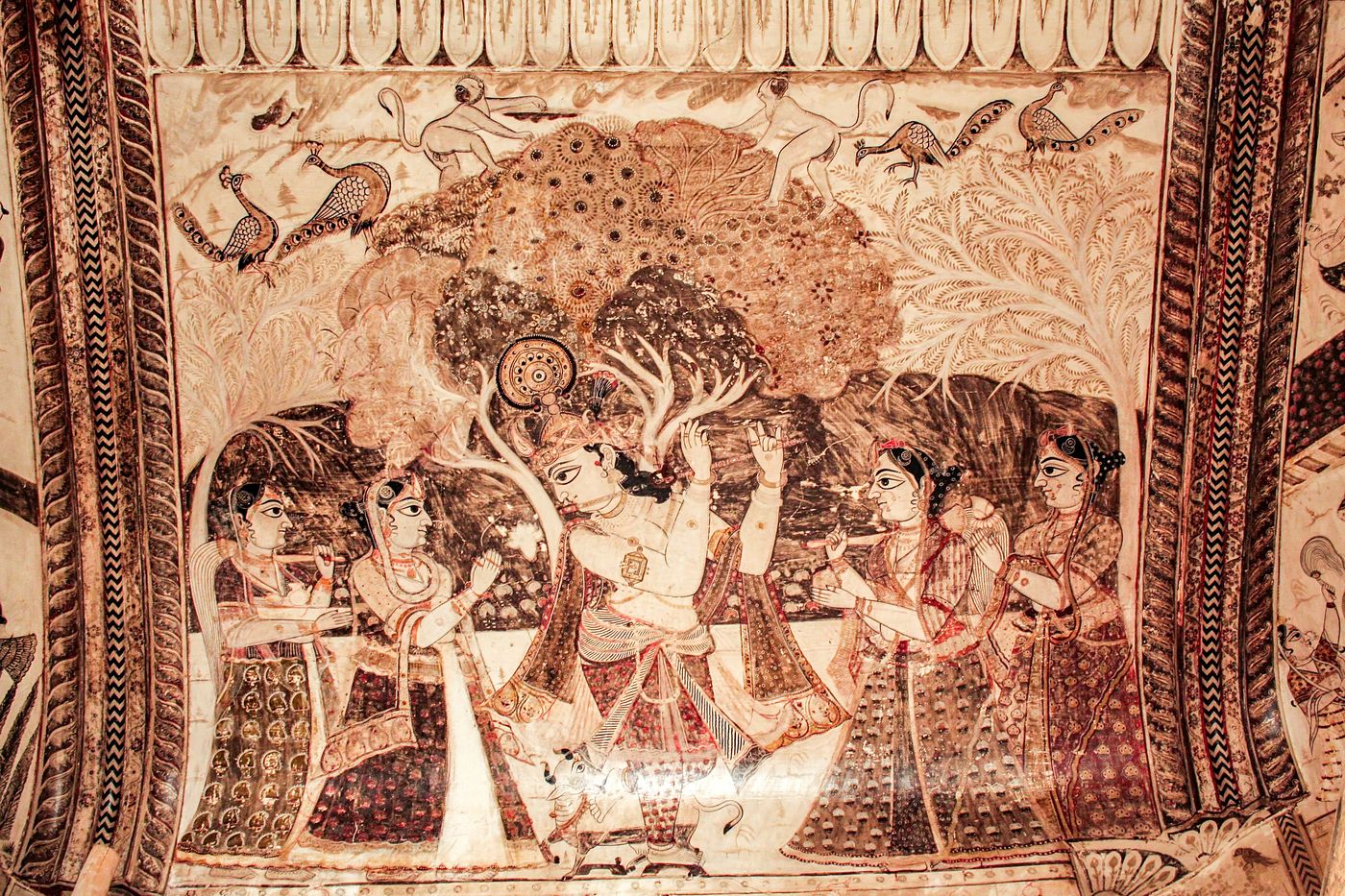
An exquisite ancient painting of Lord Krishna dancing with Gopis, on the walls of the Lakshmi Narayan Temple, Orchha © ImagesofIndia
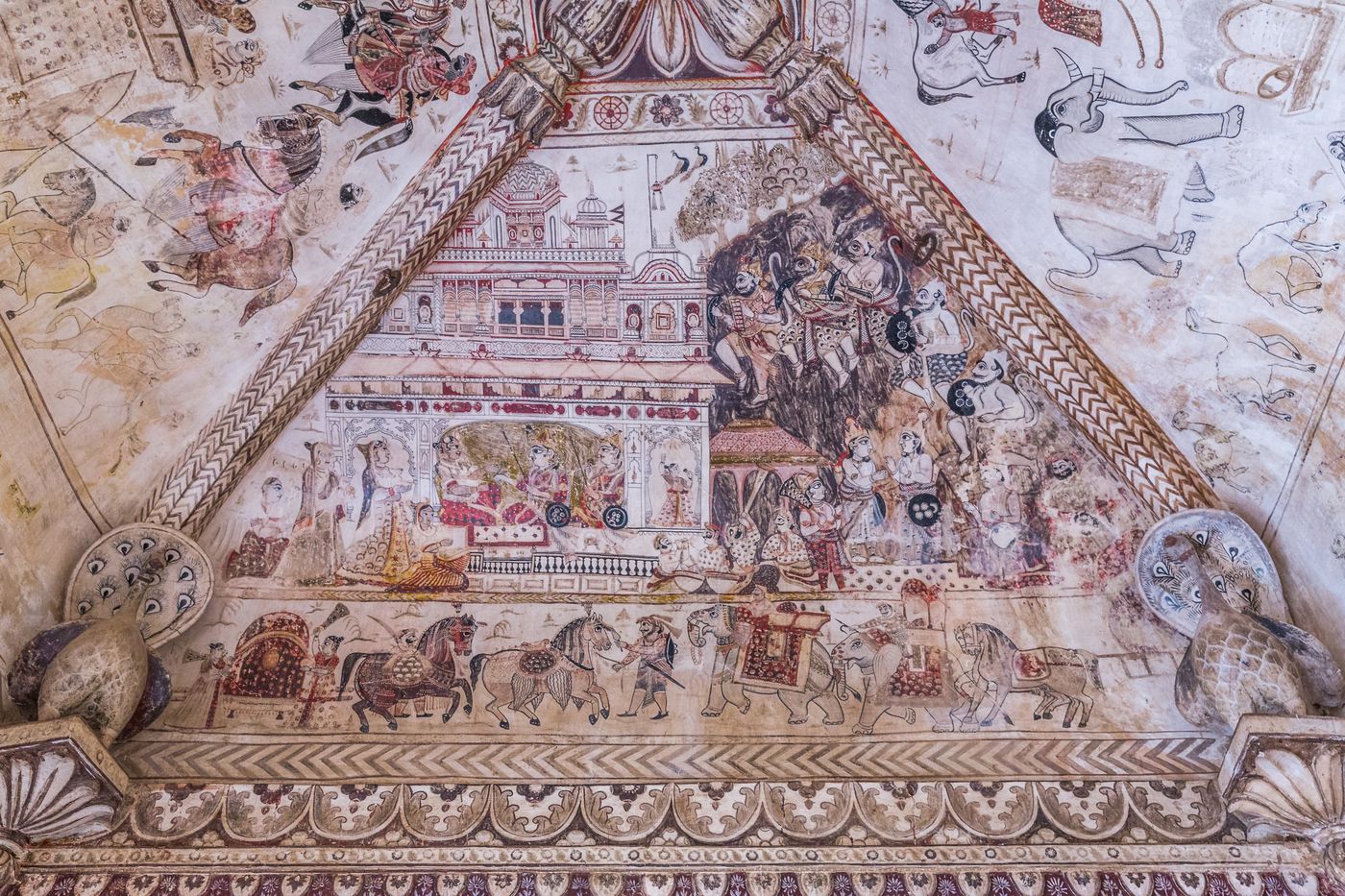
In this wall painting, Lora Rama’s beautiful palace is depicted. He is sitting in his back chamber with his consort Sita. They are surrounded by other deities like the monkey god Hanuman, and his brothers and sisters. They are dancing in celebration of the defeat of the demon Ravana in Sri Lanka, according to a story from the famous Hindu epic Ramayana, Orchha © Kevin Standage
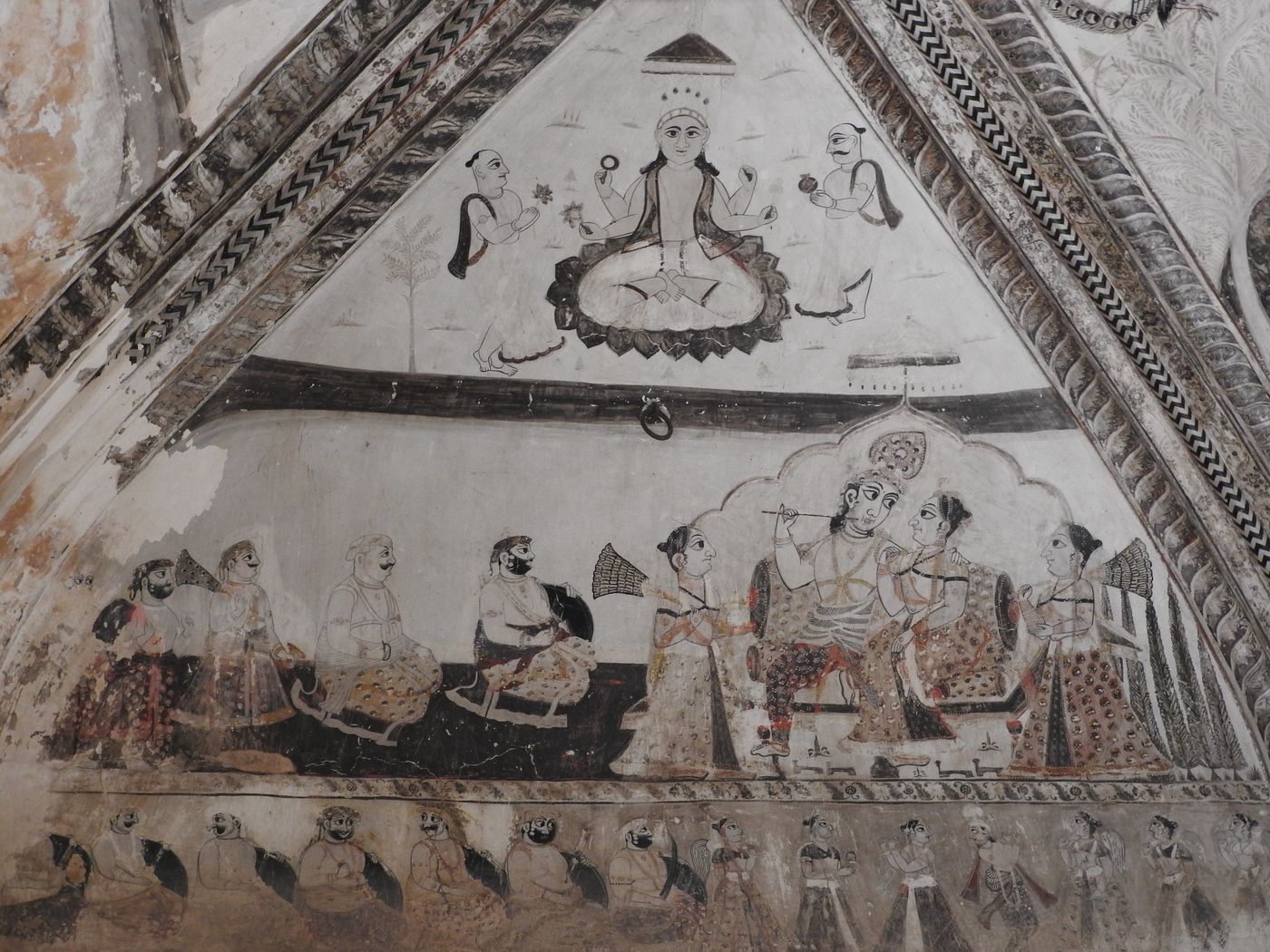
Krishna Ras Leela portrayed in a Mural on the ceiling of Lakshmi Narayan temple, Orchha. On top Lord Vishnu sits in the pose of a yogi or yoga practitioner, while down below Lord Krishna is seen with a flute in his hand, next to his favorite consort Radha © Konstantin Litvinov
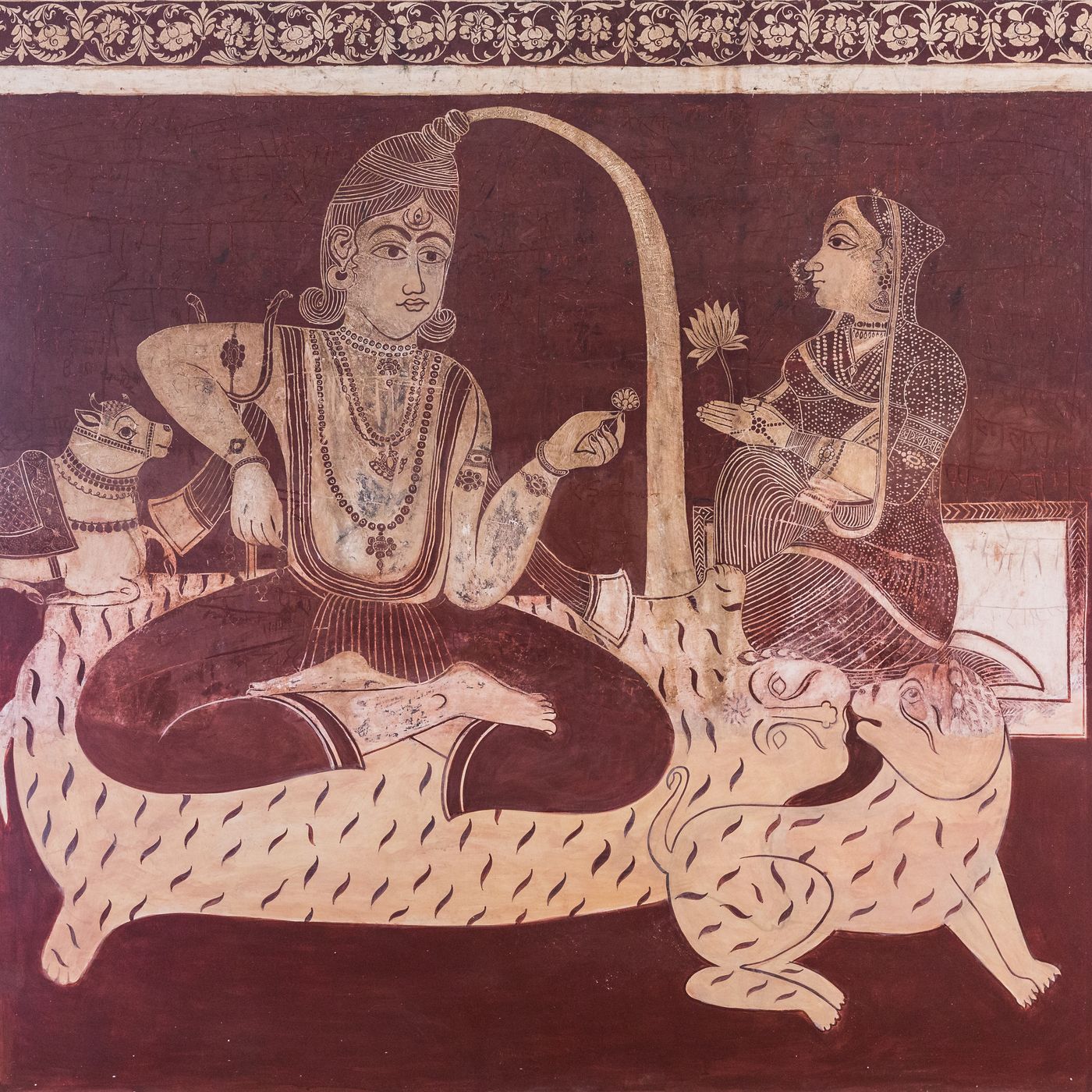
Lord Shiva and Parvati offer flowers to each other in a romantic scene. The holy River Ganga is seen oozing from Shiva’s hair, Orchha © Kevin Standage
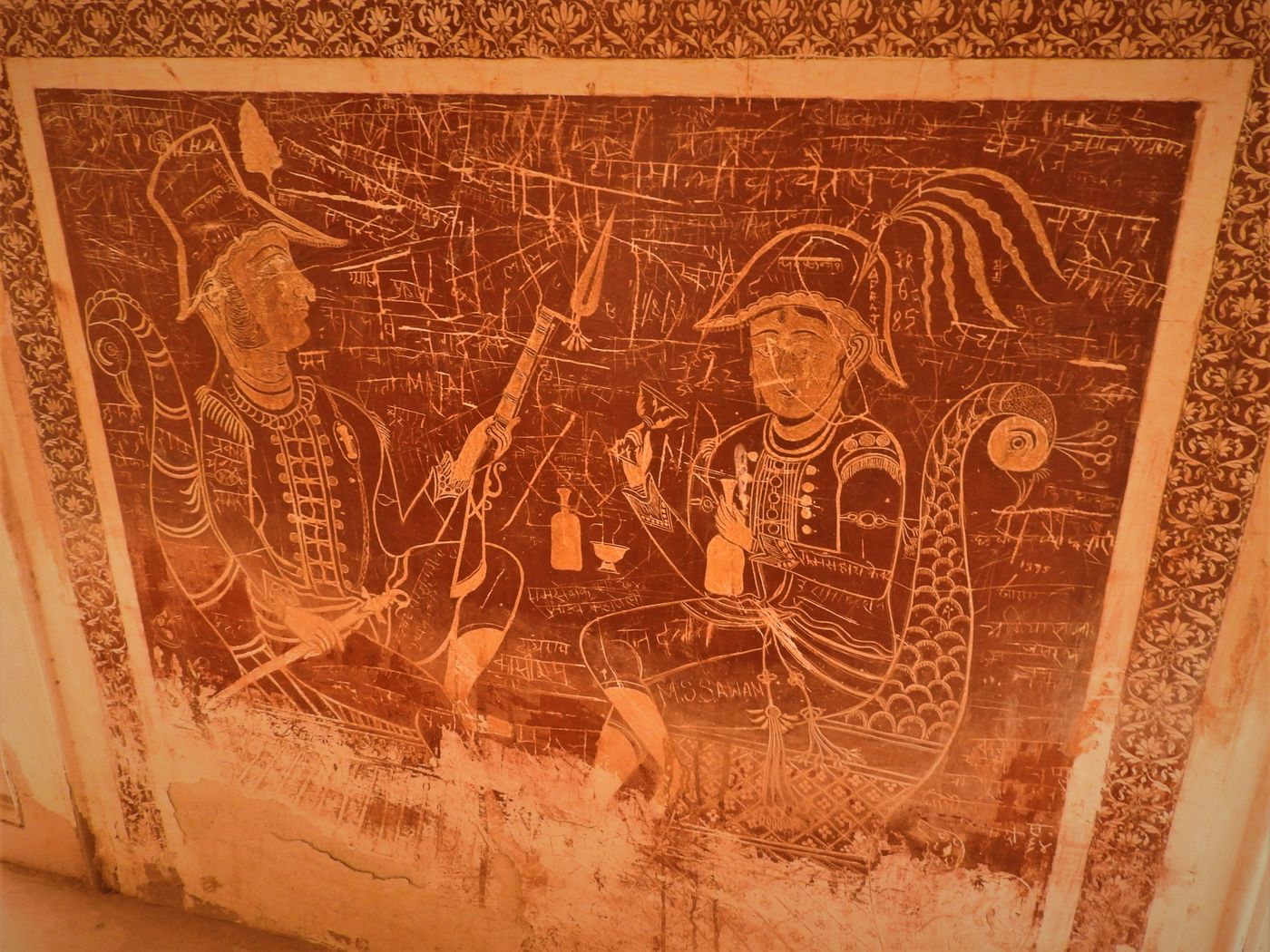
Paintings of British officers holding their guns while one of them enjoys a glass of wine, Orchha © Kevin Standage
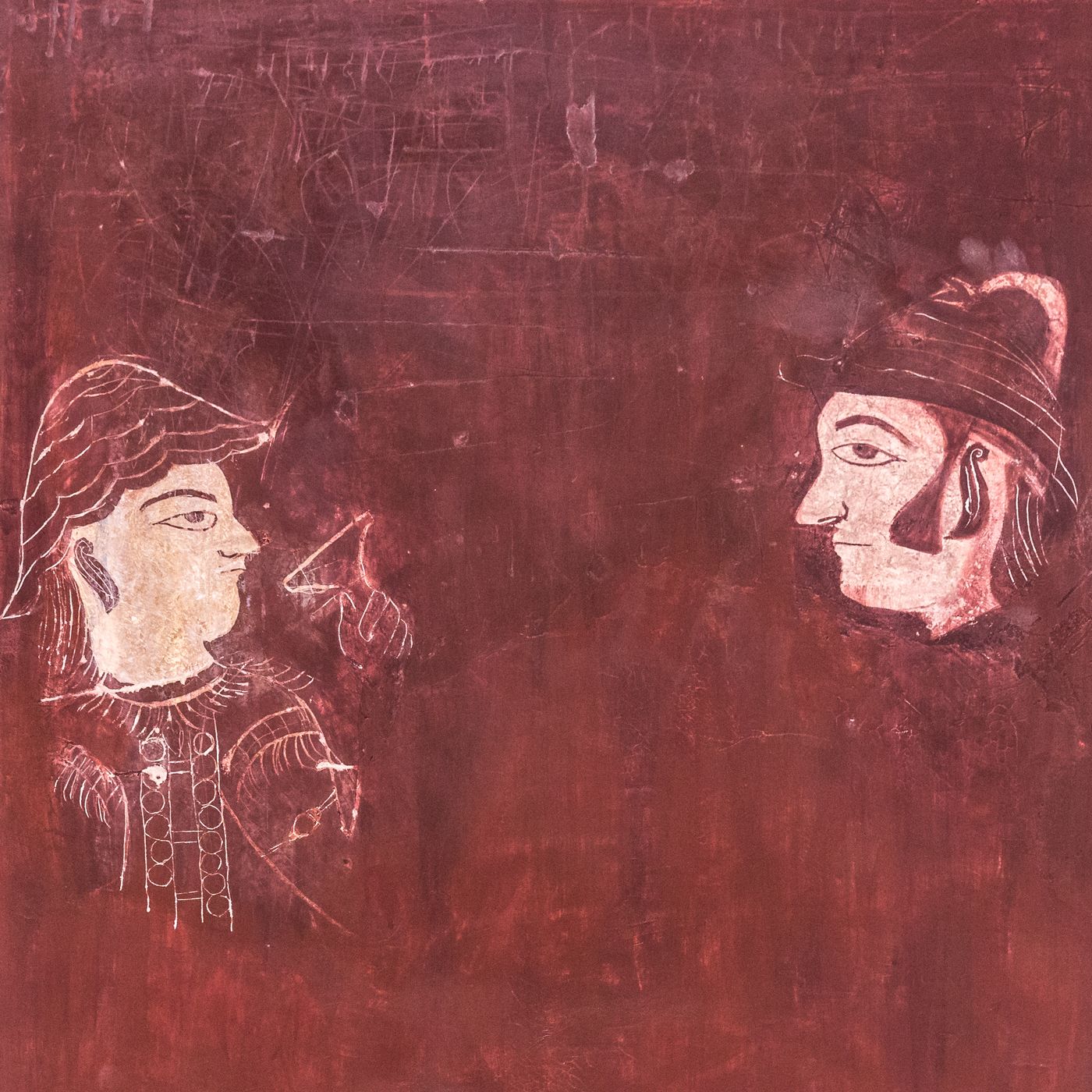
Portrait of British officers holding a wine glass, Orchha © Kevin Standage
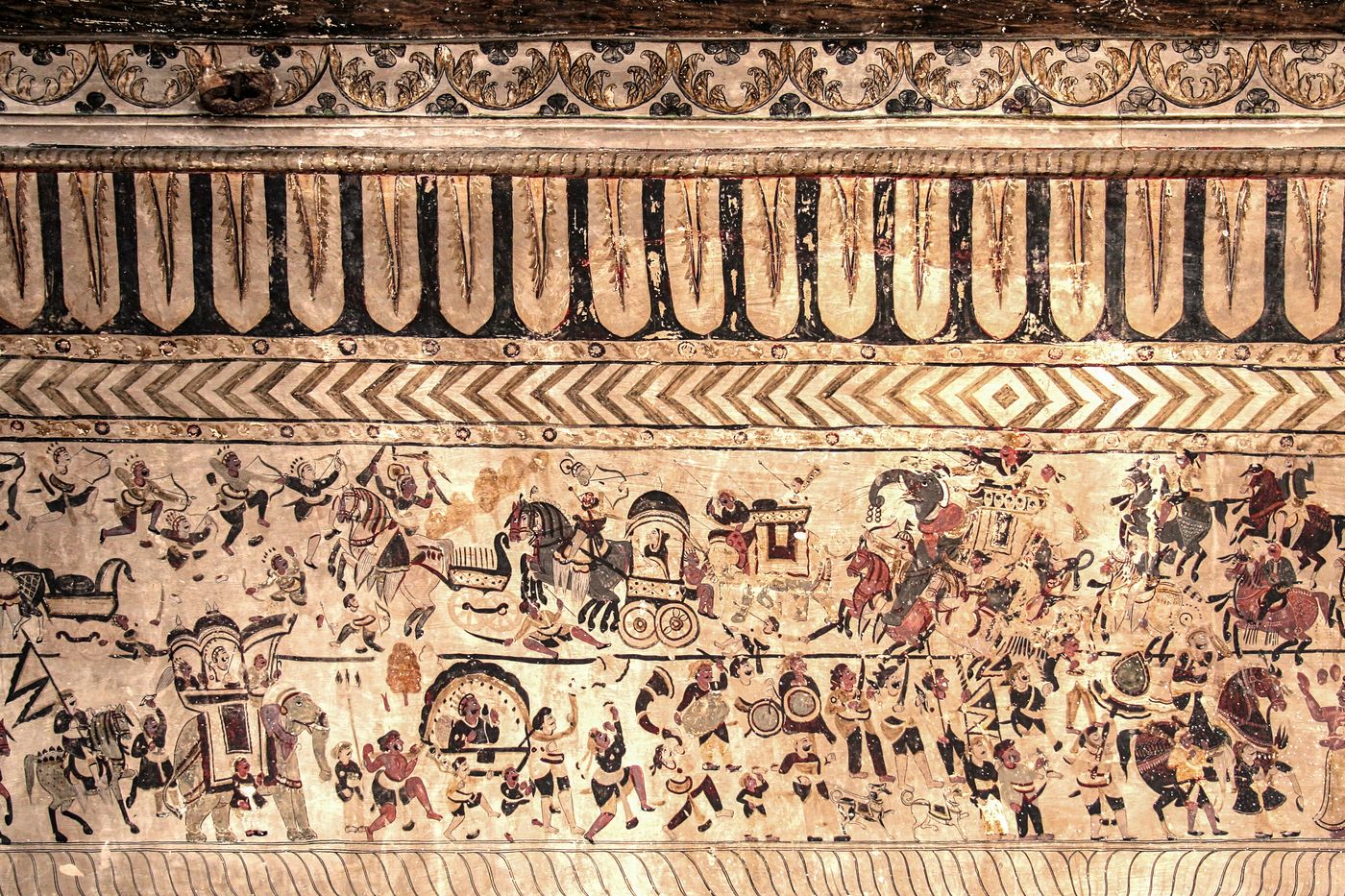
The panel below depicts a royal family wedding procession. The upper panel depicts a fighting scene, Orchha © Kevin Standage
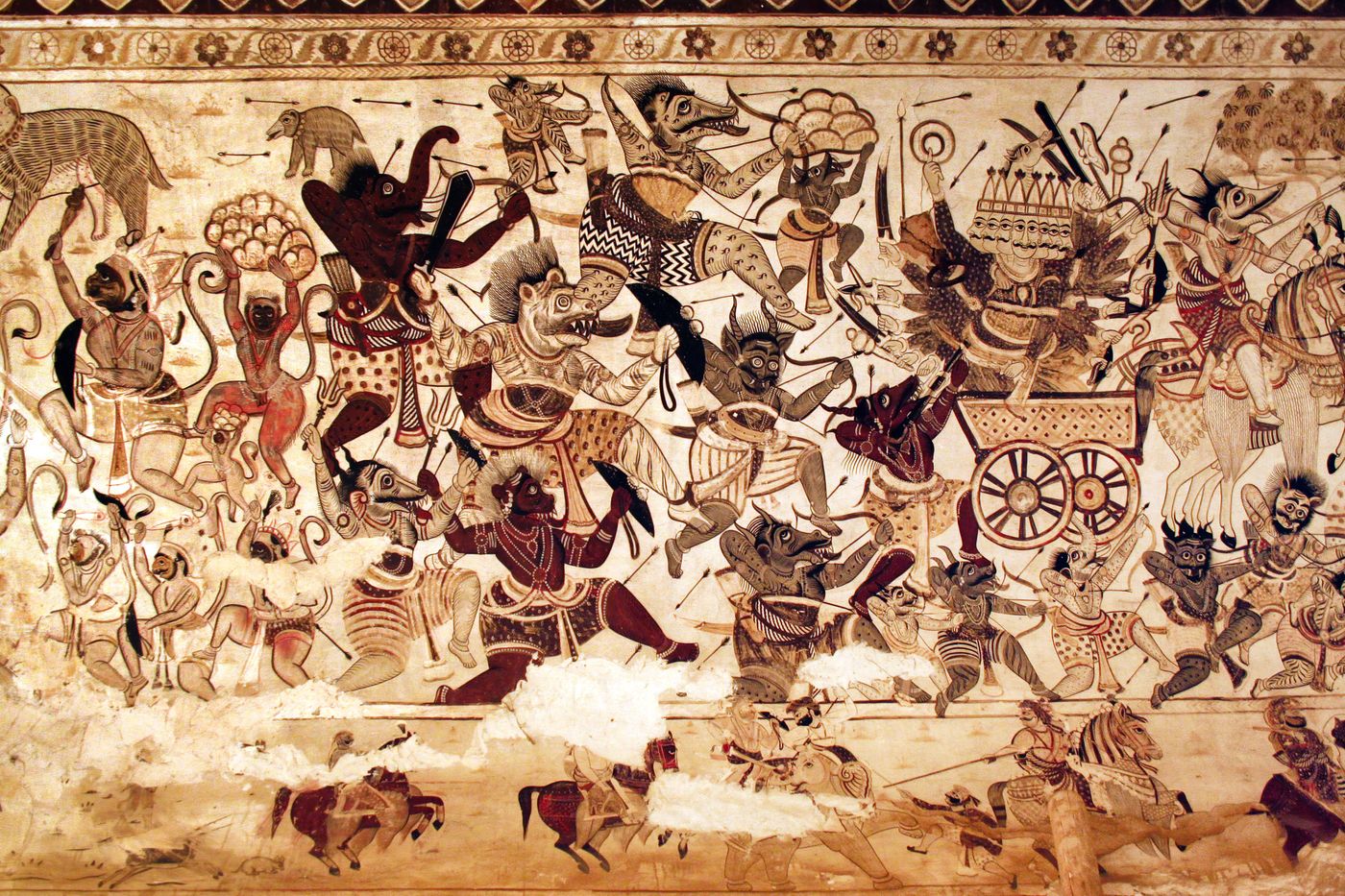
This detailed painting shows a fight between Lord Rama and the demon king Ravana, together with women warriors from Sri Lanka. Each female warrior is intricately depicted with heads of animals and demons, and each face differs from the next. Ravana is shown with ten heads, sitting on a chariot. One of his heads is that of a donkey, which represents the vice of pride, Orchha © ImagesofIndia
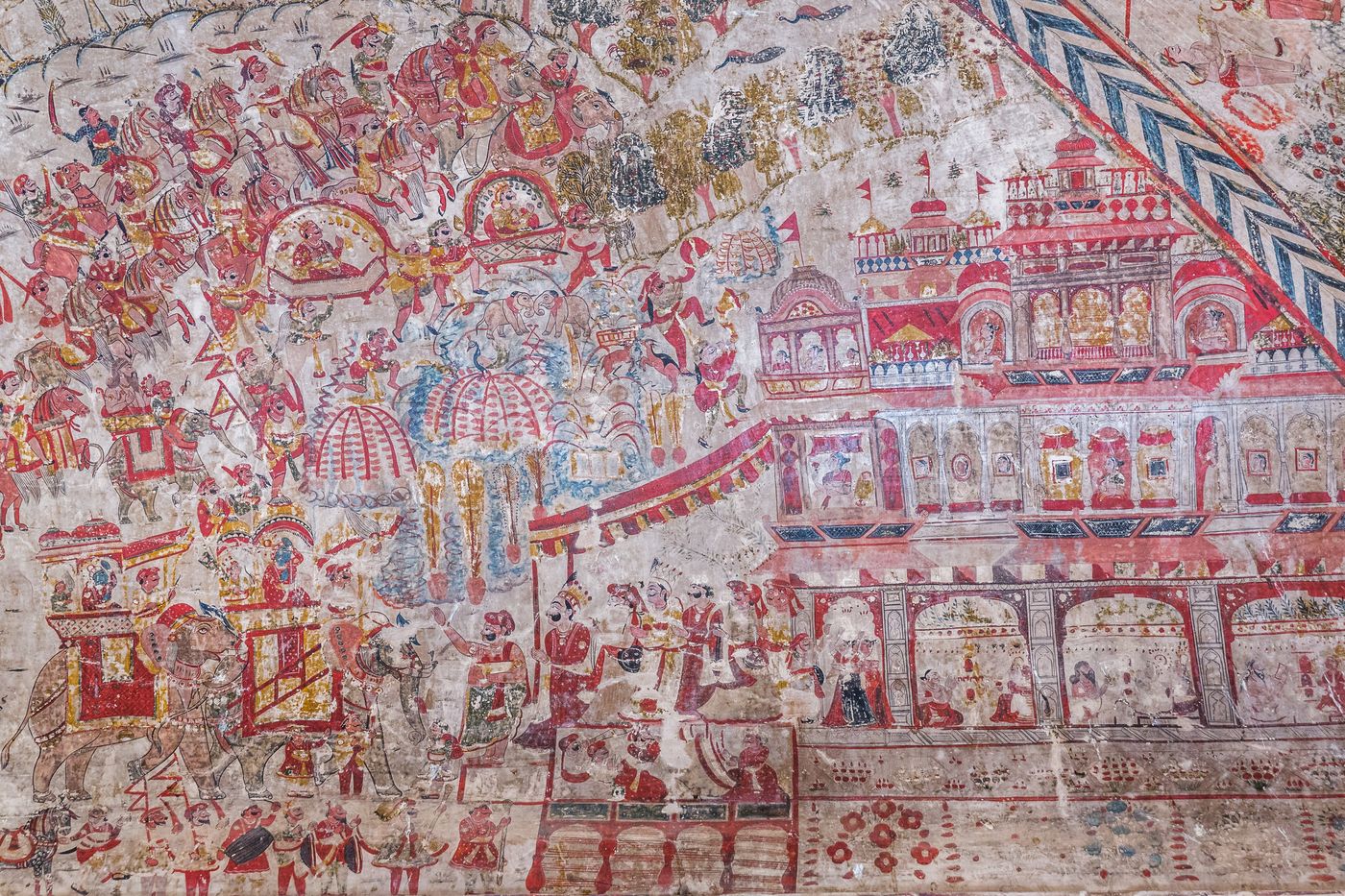
This painting shows how maharajas were welcomed back to their palaces after a victorious war. Ladies from the palace form a procession, the queens are watching from the windows, people play musical instruments, and sages perform Yajna, the fire worship, Orchha © Kevin Standage

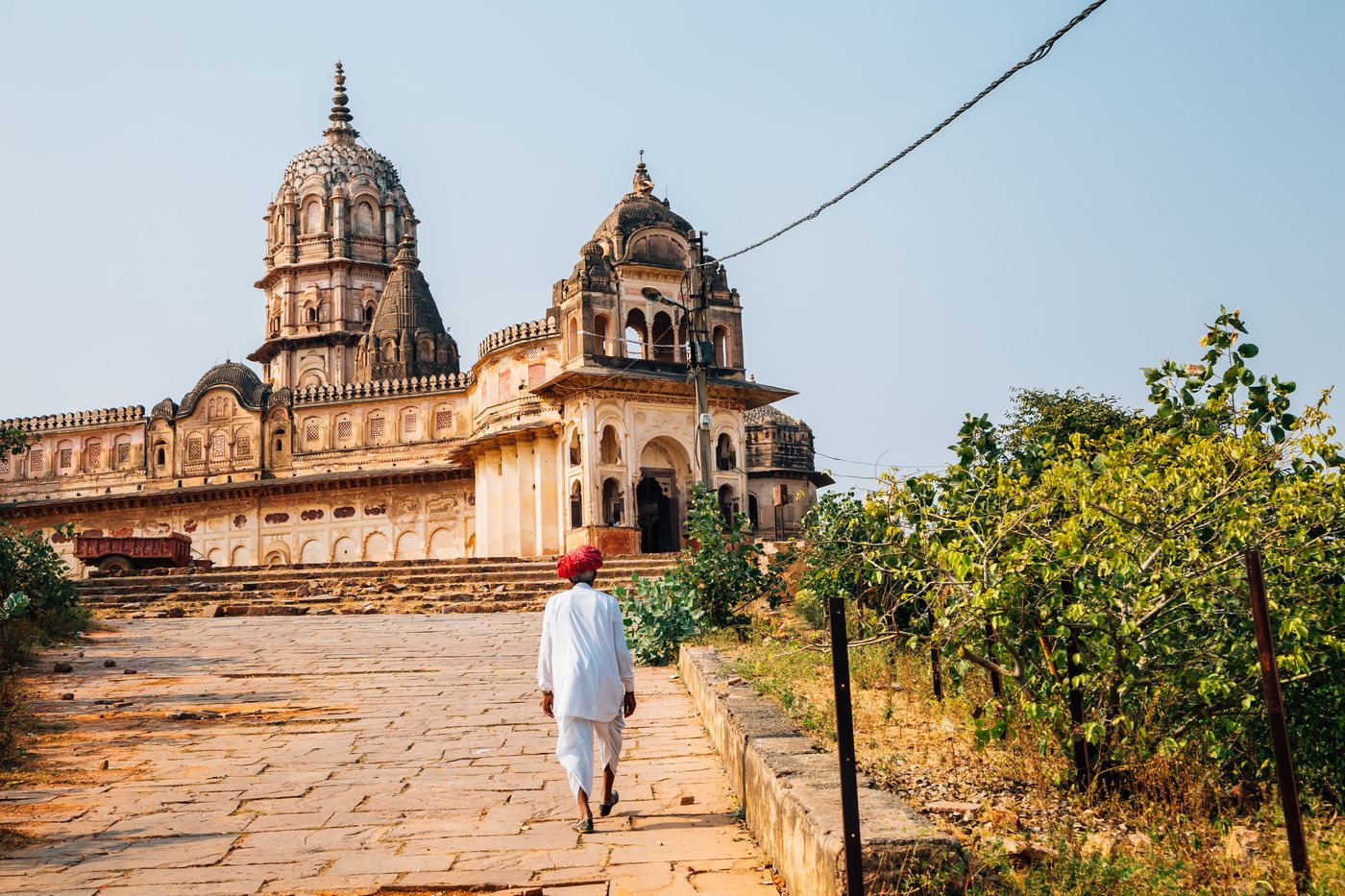
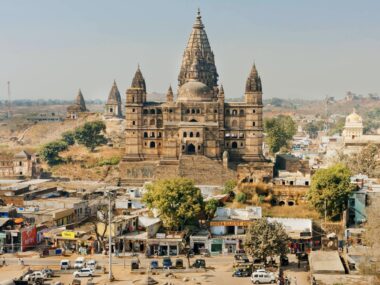
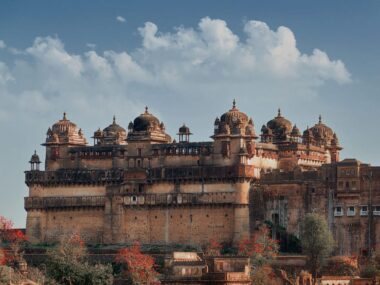
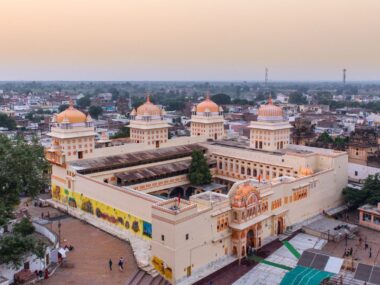
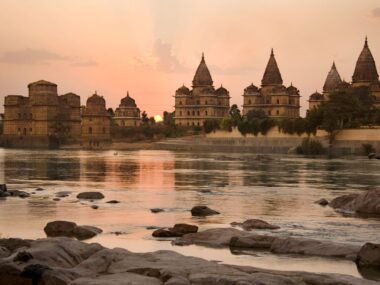
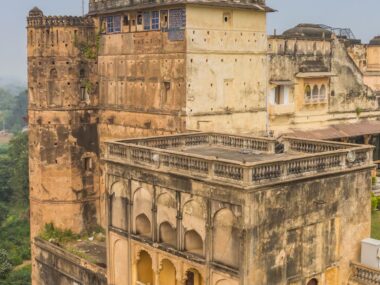
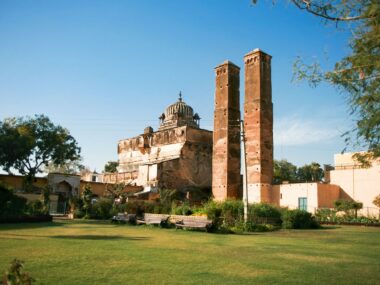

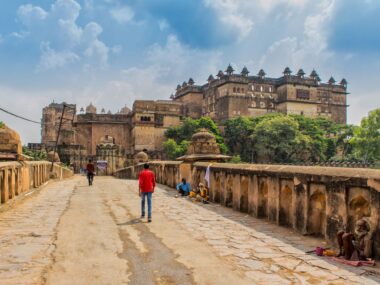
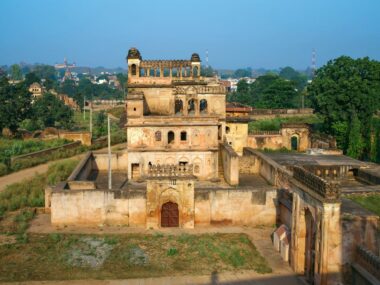
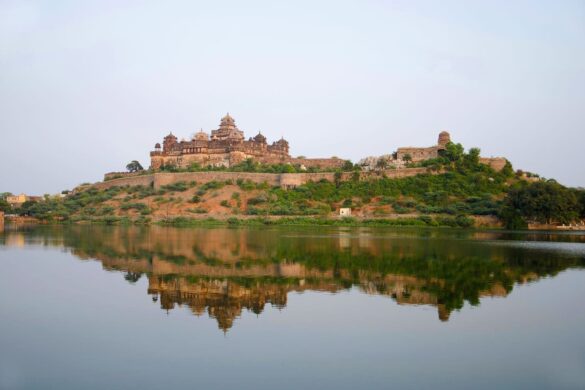
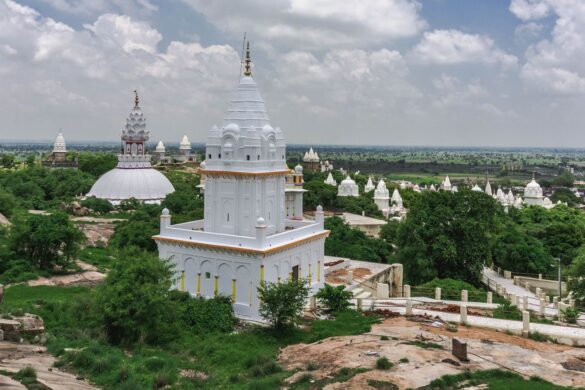
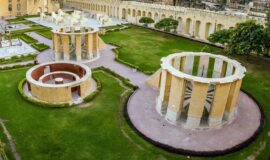
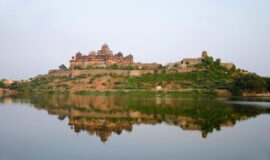
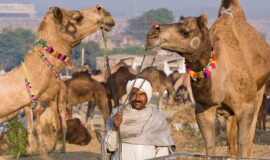
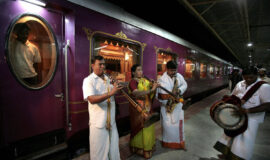


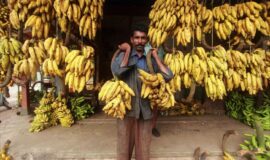
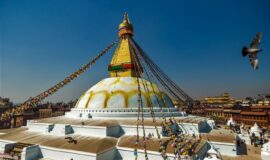
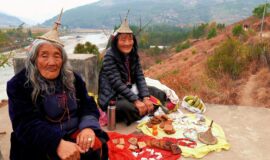
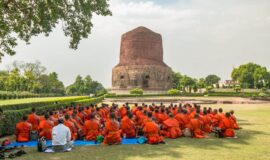
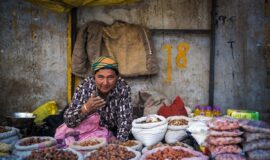

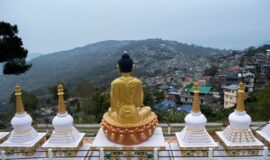
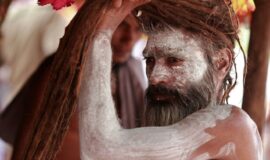
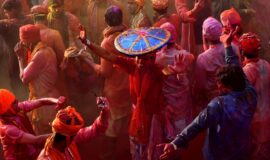

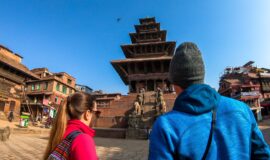


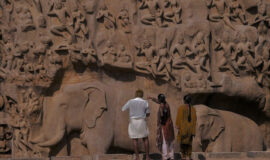

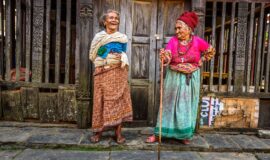
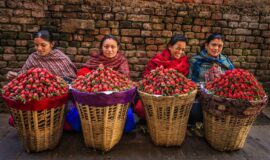

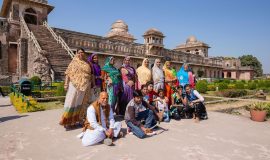
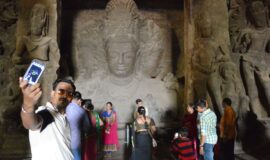
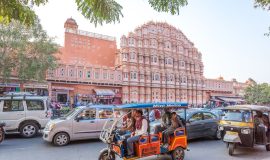
![Golden Triangle Tour with Goa [Culture + Beach Vacation] (12 days) Golden Triangle Tour with Goa [Culture + Beach Vacation] (12 days)](https://www.vacationindia.com/wp-content/uploads/2022/06/golden-triangle-tour-with-beach-vacation-270x160.jpg)
